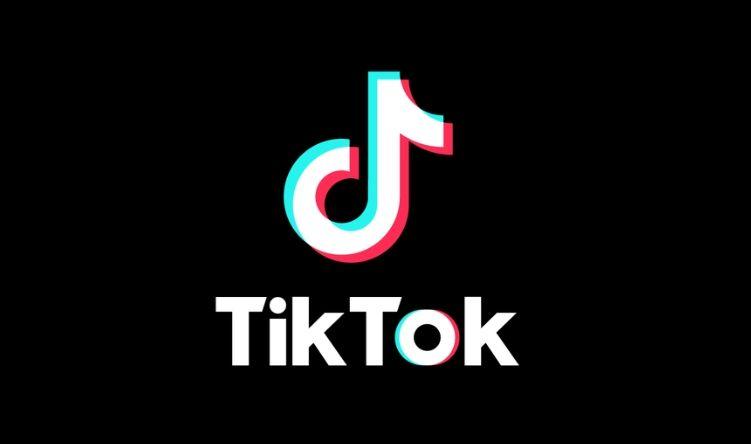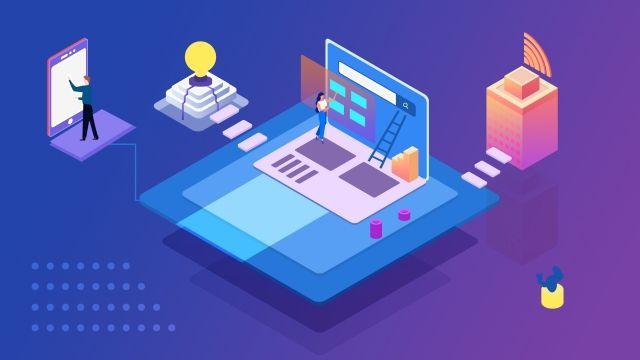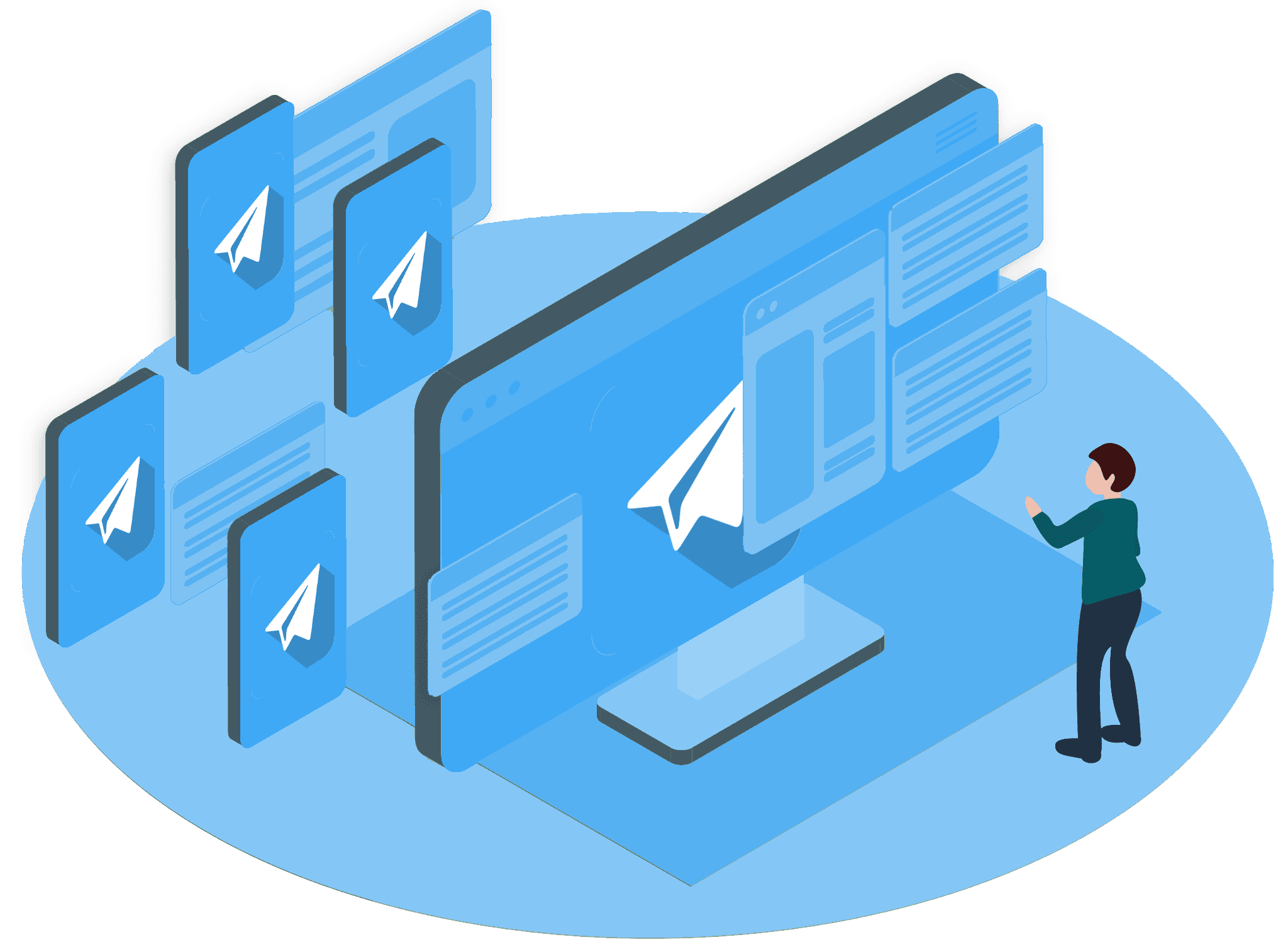客服系统

LIKE.TG出海|Telegram客服账号太多不好管?用Telegram客服系统效率翻倍!
在出海营销和全球化业务的背景下,Telegram已经成为企业不可或缺的客户沟通工具。然而,当业务扩展,客服账号增多时,企业面临的管理难题也日益增多——频繁切换账号浪费时间,客户信息分散难以追踪,客服响应速度下降等问题严重影响服务质量。这时,Telegram客服系统的多账号登录功能便成为解决这些痛点的理想选择。它不仅帮助企业高效管理多个账号,还能提升客服团队的整体工作效率,让服务质量得到质的飞跃。Telegram客服系统实现营业业务的有效性。最优惠的Telegram客服系统工具:https://www.like.tg免费试用请联系LIKE.TG✈官方客服: @LIKETGLi @LIKETGAngel为什么Telegram多账号登录是客服管理的关键?应对客户多样化需求随着业务的全球化扩展,企业需要通过多个Telegram账号与不同地区、语言或业务线的客户沟通。例如,一个账号负责售前咨询,另一个则专注于售后支持。这样做能够避免信息混乱,提高客户的响应速度和满意度。简化客服团队操作传统的管理方法要求客服人员频繁切换设备或账号,这不仅浪费时间,还可能导致信息遗漏或混乱。而通过LIKE.TG的多账号管理,客服人员可以在同一界面上轻松管理多个账号,大幅提升工作效率。减少封号风险单一账号频繁发送消息或加入多个群组,容易触发Telegram的风控机制,导致账号被封禁。通过使用多个账号,企业能够分散风险,降低封号的可能性。提高客户满意度当客服团队能够快速响应客户需求,并精准对接到合适的客服人员时,客户体验会大幅提升。这种高效的服务让企业在竞争激烈的市场中脱颖而出。数据整合和分析的需求多账号登录功能可以让企业统一管理所有客户数据,便于后续的统计分析,从而优化运营策略。什么是LIKE.TG的Telegram客服系统?LIKE.TG的Telegram客服系统是一款专为企业设计的多账号管理工具,允许客服团队在一个平台上实现多个Telegram账号的同步登录与管理。它能够帮助企业提升客服效率,减少管理的复杂性。核心功能:多账号同步登录:集中管理所有Telegram账号,无需频繁切换。客户资源整合:将多个账号的客户信息集中在一起,便于追踪和管理。自动化任务设置:支持快捷回复、定时消息等自动化功能,减轻客服团队的负担。实时数据分析:追踪每个账号的消息量、客户互动等关键数据,为优化客服策略提供依据。独立运行环境:每个账号在独立环境中运行,规避关联性封号风险。LIKE.TG的Telegram多账号登录操作步骤登录LIKE.TG客服系统软件首先,登录LIKE.TG的聚合多开客服软件,进入主界面后,点击“添加账号”。添加多个Telegram账号在系统中逐一输入Telegram账号的登录信息,并为每个账号配置独立的代理IP,确保每个账号的运行环境安全稳定。设置客服分配规则根据业务需求,为每个账号分配特定任务。例如:一个账号负责客户咨询,另一个则专注于售后服务。配置自动化功能通过设置快捷回复模板,应对高频问题,节省时间。同时,定时任务功能可用于发送活动推广信息或客户提醒。实现多账号集中管理添加成功后,所有账号的消息和客户信息将集中在一个界面中,客服人员可轻松切换账号进行处理。数据统计与分析LIKE.TG提供了强大的数据分析功能,系统能够实时跟踪每个账号的消息量、客户响应速度等,帮助企业优化资源分配,提高工作效率。LIKE.TG的独特优势多账号管理更便捷LIKE.TG支持同时登录多个Telegram账号,所有操作都可以在同一界面完成,避免频繁切换账号,提高工作效率。自动化功能提升效率通过快捷回复和自动化任务功能,客服人员可以减少重复劳动,更专注于高价值客户的服务。更高的安全性系统为每个账号提供独立的运行环境,结合代理IP技术,确保账户的安全性,降低封号风险。实时数据分析LIKE.TG的系统提供详细的数据报表,帮助企业实时追踪客服团队的工作表现,优化运营策略。多平台支持除了Telegram,LIKE.TG还支持WhatsApp、LINE等多个通讯平台的多账号管理,成为企业的一站式客服解决方案。提升Telegram客服效率的小技巧提前规划账号分工根据客户来源、语言或需求,提前为每个账号明确分工,避免信息混乱。定制快捷回复模板设置常见问题的快捷回复模板,确保客服团队能够快速响应客户需求。动态调整客服分配规则根据客户需求或业务重点调整客服团队的账号分配规则,确保资源分配合理。定期清理无效数据定期整理和清理客户信息,删除无效对话记录,确保系统运行效率。利用数据优化客服策略根据数据分析结果调整客服团队的运营模式,提高客户满意度和服务质量。LIKE.TG Telegram客服系统让管理更简单通过LIKE.TG的Telegram客服系统,企业不仅能够高效管理多个账号,还能确保账号的安全性,提升客服团队的工作效率。如果你也在为多账号管理而烦恼,赶紧联系我们的客服,体验免费试用,让你的客服团队从容应对多账号管理的挑战,效率翻倍,服务更出色!免费试用LIKE.TG官方:各社媒平台获客工具,住宅代理IP,翻译器,计数器,号段筛选等出海工具;请联系LIKE.TG✈官方客服:@LIKETGLi @LIKETGAngel想要了解更多,还可以加入LIKE.TG官方社群 LIKE.TG生态链-全球资源互联社区 /联系客服 进行咨询领取官方福利哦!

LIKE.TG出海|Telegram客服系统可以多账号登录吗?使用方法全解析!
在当今出海营销和全球化的客户服务场景中,Telegram已经成为许多企业不可或缺的沟通工具。然而,随着业务的增长,企业往往需要管理多个Telegram账号,以满足不同客户群体的需求。如何高效管理这些多个账号,并提升客服团队的工作效率?答案是:使用专业的Telegram客服系统。通过Telegram客服系统,企业不仅可以实现多个账号的高效管理,还能优化操作流程,让客服工作变得更加顺畅和高效。最好用的Telegram客服系统工具:https://www.like.tg免费试用请联系LIKE.TG✈官方客服: @LIKETGLi @LIKETGAngel为什么企业需要Telegram多账号登录?客户覆盖范围广随着客户群体的扩展,单一的Telegram账号已经无法满足多个地区、语言或业务线的需求。这时,使用多个账号进行管理显得尤为重要。提高客服团队响应速度通过将多个账号分配到不同的客服团队,能够有效减少客户的等待时间,提高客户体验,进而增强客户忠诚度。防止封号风险单个账号频繁发送信息或操作时,容易触发Telegram的风控机制,这可能导致账号被封。多个账号可以有效分担操作风险,避免一个账号的封禁影响到整个团队的工作。优化客户资源管理多个账号可以为不同的客户群体创建专属沟通渠道,确保每个客户都能得到最专注的服务,使客户关系更加清晰。提高运营效率通过统一管理多个账号,企业可以快速分配客服资源,实时查看客户信息,节省大量的时间和精力,从而提高整体运营效率。Telegram客服系统如何支持多账号登录?Telegram客服系统是一款专为企业设计的多账号管理工具。它能通过先进的技术实现多个账号的同时登录,让客服团队无需频繁切换账号,所有操作都可以集中在同一个平台完成。核心功能多账号同步登录:可以在同一界面轻松管理多个Telegram账号,避免频繁切换,提高效率。自动化任务:支持设置快捷回复、自动发送消息等功能,减少重复操作,让客服团队更加专注于客户需求。客户信息整合:所有账号的聊天记录和客户信息会集中管理,方便后续跟进和分析。独立运行环境:每个账号都可以独立运行,减少账号关联带来的封号风险。数据分析功能:可以实时查看每个账号的消息量、响应速度等数据,帮助优化客服策略。Telegram多账号登录的操作步骤登录LIKE.TG聚合多开客服软件登录装LIKE.TG多开软件,并完成基础设置。添加多个Telegram账号登录后进入主界面,点击“添加Telegram账号”,逐个输入账号信息,为每个账号分配独立的代理IP,以确保账号运行的安全性。设置自动化功能在系统中配置快捷回复模板和定时消息任务,根据不同客服需求定制自动化任务。实现统一管理所有添加的账号会统一显示在主界面,客服团队可以在同一个平台上快速切换操作,并实时同步客户信息和聊天记录。数据监控与优化通过LIKE.TG的“数据分析”模块查看每个账号的消息量和响应时间等数据,评估每个客服账号的表现,并根据数据优化资源分配。LIKE.TG聚合多开客服软件的独特优势一键多开,轻松管理:LIKE.TG支持多个Telegram账号同时在线,无需频繁切换界面,所有操作都可以在一个平台上完成,极大提升了操作效率。自动化功能减负:支持自动发送欢迎信息、快捷回复、定时群发等功能,节省时间和精力,让客服团队专注于客户服务。安全可靠的独立环境:每个账号都在独立环境中操作,并结合代理IP技术,避免账号关联和封号风险。数据驱动决策:LIKE.TG提供多维度的数据报表,帮助企业优化客服策略,提升工作效率。跨平台支持:除了Telegram,LIKE.TG还支持WhatsApp、LINE等主流通讯平台的多账号管理,是企业客服的一站式解决方案。Telegram多账号登录的常见问题是否会引发封号风险?如果多个账号同时使用相同设备或IP地址,确实可能触发Telegram的风控机制。为避免这个问题,LIKE.TG为每个账号分配独立IP,确保账号操作的安全性。如何避免账号信息混乱?使用LIKE.TG客服系统集中管理所有账号的聊天记录和客户信息,确保信息清晰、井然有序。是否支持批量操作?LIKE.TG支持批量添加好友、发送消息等功能,非常适合需要处理大量客户的团队。是否可以设置不同客服权限?LIKE.TG允许为每个账号设置不同的权限,确保团队成员的操作更加明确,有效防止操作失误。提高多账号管理效率的小技巧提前规划账号分工:根据客户群体、地区和语言等维度,为每个Telegram账号明确分工,避免混淆。使用快捷回复模板:为常见问题设置快捷回复模板,减少重复输入,提升客服响应速度。定期清理无效对话:定期整理聊天记录,删除无效对话,保持界面清爽,提高操作效率。动态调整客服分配:根据客户需求和数据分析结果,灵活调整客服团队的账号分配规则,以适应不同的工作量。Telegram客服系统让多账号管理更简单通过LIKE.TG的多账号管理功能,企业可以轻松解决多个Telegram账号的管理难题。结合LIKE.TG聚合多开客服软件,企业不仅能提升工作效率,还能有效保障账号安全。如果你也在为多账号管理头痛不已,现在就联系我们,体验免费试用,享受高效便捷的客服管理解决方案!免费试用LIKE.TG官方:各社媒平台获客工具,住宅代理IP,翻译器,计数器,号段筛选等出海工具;请联系LIKE.TG✈官方客服:@LIKETGLi @LIKETGAngel想要了解更多,还可以加入LIKE.TG官方社群 LIKE.TG生态链-全球资源互联社区 /联系客服 进行咨询领取官方福利哦!

LIKE.TG出海|如何高效管理Telegram多个账号?选择LIKE.TG客服系统,轻松搞定!
在全球即时通讯应用中,Telegram凭借其强大的安全性和高效性,已成为许多企业进行客户沟通的重要工具。然而,随着企业规模的扩大和客户数量的激增,如何高效管理多个Telegram账号,成为了不少企业的难题。频繁切换账号、客户信息无法集中管理,甚至因为操作失误导致封号,这些都成了企业客服团队的主要痛点。今天,我们为您带来解决方案——LIKE.TG Telegram客服系统,轻松帮助企业解决多账号管理多个Telegram账号问题,提高客服效率,规避封号风险,让业务发展更顺畅。最实用的管理Telegram多个账号工具:https://www.like.tg免费试用请联系LIKE.TG✈官方客服: @LIKETGLi @LIKETGAngel为什么Telegram多账号管理对企业至关重要?客户需求多样,账号管理难题凸显 随着跨境电商、教育、金融等行业的快速发展,企业与客户的沟通需求也日益增多。为了覆盖更多的客户群体,企业往往需要多个Telegram账号,但在没有合适的工具时,频繁切换账号往往会浪费时间,降低效率。信息分散导致协作不畅 企业通常需要在多个设备或应用中管理Telegram账号,客户信息难以集中管理,导致客服人员无法快速响应和跟进客户需求,影响整体服务质量。账号频繁切换,封号风险高 Telegram的风控系统对同一设备频繁登录多个账号有较高的敏感度,这会导致账号被封禁,增加企业运营风险。缺乏数据分析,难以优化客服策略 多账号管理往往意味着没有统一的数据分析平台,客服团队无法清晰了解每个账号的表现,无法根据数据调整客服策略,提升团队效率。人力资源浪费 客服团队需要投入大量时间在多个账号之间切换和整理信息,造成了不必要的工作负担,降低了整体工作效率。什么是LIKE.TG Telegram客服系统?LIKE.TG是专为企业设计的Telegram客服系统,它支持多账号管理,可以让企业轻松登录和管理多个Telegram账号,优化客服流程,提供全面的数据支持。以下是LIKE.TG的核心功能:多账号同步登录:无需频繁切换账号,所有Telegram账号集中在一个平台管理,操作简单高效。自动化任务设置:快捷回复、定时消息、批量操作,客服工作更加自动化,提升响应速度。客户资源整合:集中管理所有账号的客户信息,确保客户需求不会被遗漏。实时数据分析:通过数据报表功能,实时跟踪客服工作表现,优化团队效率。安全保护措施:通过代理IP技术,每个账号都能独立运行,降低封号风险。Telegram多账号登录的难点与LIKE.TG的解决方案难点:无法同时登录多个账号 Telegram原生应用对多账号登录有限制,频繁切换账号容易导致登录失效,增加工作负担。解决方案: LIKE.TG支持多个账号同时登录,所有的聊天信息集中在同一个界面,避免了频繁切换的烦恼,让客服工作更加高效。难点:操作繁琐,效率低 手动切换多个账号并管理信息,不仅浪费时间,还容易遗漏客户需求,降低了客服效率。解决方案: 使用LIKE.TG的自动化功能,设置快捷回复和自动分配客户,客服人员能够专注于更有价值的互动,提升响应速度。难点:账号关联引发封号风险 多个账号使用同一设备或IP地址登录,容易触发Telegram的风控机制,导致封号。解决方案: LIKE.TG为每个账号分配独立代理IP,确保每个账号在独立环境下运行,有效规避封号风险。难点:客户数据分散,管理混乱 多个账号的客户数据分散,客服人员无法实时同步客户信息,影响整体运营效率。解决方案: LIKE.TG提供统一的客户数据管理功能,所有账号的客户聊天记录实时同步,便于数据统计、分析和后续跟进。如何使用LIKE.TG Telegram客服系统提升客服效率?登录LIKE.TG软件 首先从官方了解并登录LIKE.TG软件,完成登录后,您就可以开始使用该系统。添加多个Telegram账号 将所有需要管理的Telegram账号添加到LIKE.TG中,为每个账号分配独立的代理IP,确保账号安全。设置自动化任务 创建常见问题的快捷回复模板,利用定时消息功能,向客户自动发送活动通知或重要信息。优化客户分配 根据客户来源、需求等,设置客户分配规则,让合适的客服人员对接到合适的客户。查看数据报表 定期查看LIKE.TG提供的数据报表,了解每个账号的消息量、响应时间等指标,优化客服资源配置。LIKE.TG的独特优势高效的多账号管理 LIKE.TG支持一键登录多个Telegram账号,避免了传统方法中频繁切换账号的问题,大幅提升了工作效率。自动化功能提升响应速度 设置快捷回复、定时发送消息等功能,帮助客服团队提高响应速度,确保客户能够快速得到解决方案。保障账号安全 每个账号都在独立环境下运行,结合代理IP技术,有效避免账号关联和封号风险。实时数据分析,优化客服策略 LIKE.TG提供全面的数据报表,帮助企业实时掌握客服团队的工作表现,为优化运营策略提供有力支持。跨平台支持 除了Telegram,LIKE.TG还支持管理WhatsApp、LINE等其他主流社交平台的账号,适用于多平台的客服管理。提升多账号管理效率的小技巧使用快捷回复模板:提前设置常见问题的回复,减少重复性工作,提升客服响应效率。定期清理聊天记录:保持账号界面的整洁,定期清理无效对话,提高操作效率。优化客户分配规则:根据客户需求合理配置客服资源,确保每位客户得到及时响应。根据数据调整策略:通过分析报表数据,调整客服资源的分配,确保更高效的客户管理。通过LIKE.TG Telegram客服系统,企业能够轻松管理多个Telegram账号,提升客服团队的工作效率。其强大的自动化功能、数据分析功能、以及安全防护措施,帮助企业克服多账号管理的难题,提高客户满意度。立即体验LIKE.TG,让客服管理更简单高效,业务发展更顺畅!免费试用LIKE.TG官方:各社媒平台获客工具,住宅代理IP,翻译器,计数器,号段筛选等出海工具; 请联系LIKE.TG✈官方客服:@LIKETGLi @LIKETGAngel 想要了解更多,还可以加入LIKE.TG官方社群 LIKE.TG生态链-全球资源互联社区 /联系客服 进行咨询领取官方福利哦!

LIKE.TG出海|Telegram客服系统如何助力企业解决多账号登录难题?最稳定的Telegram客服系统
在全球化业务和出海营销的浪潮中,Telegram已成为许多企业和品牌的沟通利器。但随着业务扩展,尤其是客服团队管理多个账户的需求愈加迫切,企业往往面临着如何高效地管理和切换多个Telegram账号的问题。幸运的是,LIKE.TG的出现,为这一难题提供了解决方案推出了Telegram客服系统。今天,我们就来聊聊如何通过LIKE.TG的Telegram客服系统,让您的多账号管理更加轻松无忧!最稳定的Telegram客服系统工具:https://www.like.tg免费试用请联系LIKE.TG✈官方客服: @LIKETGLi @LIKETGAngel为什么企业需要多账号管理?随着企业规模的扩大,尤其是电商、游戏或金融行业,客服团队不得不面对越来越多的客户和需求。Telegram作为一个高度互动的即时通讯平台,成为了沟通的核心工具。多账号管理对于企业来说,是个“刚需”。多渠道客户沟通: 客户的多样化需求促使企业通过多个Telegram账号来满足不同客户群体的沟通。提高团队协作效率: 如果客服团队每个账号都分开管理,容易错过客户或重复回复相同的问题。规避封号风险: 频繁切换多个账号,可能会触发Telegram的安全机制,增加封号的风险。统一客户数据管理: 客户数据分散在不同账号中,整理和跟进变得繁琐。这时候,LIKE.TG的Telegram客服系统就可以帮助企业解决这些挑战。什么是LIKE.TG的Telegram客服系统?LIKE.TG的Telegram客服系统是专为企业量身定制的一款多账号管理工具,能同时登录和管理多个Telegram账号,提高沟通效率,避免遗漏和混乱。以下是系统的一些核心功能:多账号无缝切换通过LIKE.TG,企业可以在同一界面下轻松管理多个Telegram账号,集中展示,提高工作效率。自动化任务与消息回复LIKE.TG系统支持快捷回复和自动化任务功能,解放客服人员的双手。客户分配与跟进系统支持根据客户来源或需求,自动将客户分配给指定客服人员。数据统计与分析LIKE.TG提供强大的数据统计功能,实时查看消息量、客服响应速度等数据。如何解决Telegram多账号登录的难题?企业可以利用LIKE.TG解决Telegram多账号登录的问题,关键点包括:无缝切换多个账号: 使用LIKE.TG集中管理多个Telegram账号。独立登录环境,保障账号安全: 为每个账号创建独立的登录环境,配置独立代理IP。自动化任务,提高客服效率: 设置自动回复、定时发送活动信息。实时数据同步与分析: 确保沟通记录实时同步,定期报表分析。如何使用LIKE.TG提升客服效率?推荐以下步骤,帮助您高效管理多个Telegram账号:设置多个账号的登录环境下载并安装LIKE.TG的多开软件,添加多个Telegram账号,并为每个账号设置独立的代理IP。优化客服分配规则根据不同客户来源,设置分配规则。设置自动化任务利用LIKE.TG的自动化任务功能,创建快捷回复模板和定时发送活动消息。数据驱动优化客服策略通过实时数据报表,掌握各账号工作状况,及时调整策略。Telegram多账号登录的注意事项控制登录频率: 避免短时间内频繁切换账号。使用独立的设备或环境: 确保每个账号使用独立的设备和IP地址。定期更新账号状态: 保持账号活跃,避免被系统降权。借助专业工具: 使用LIKE.TG等专业工具管理多个账号。通过LIKE.TG的Telegram客服系统,企业可以轻松解决多账号登录的难题,提升客服团队的工作效率。免费试用LIKE.TG官方: 各社媒平台获客工具,住宅代理IP,翻译器,计数器,号段筛选等出海工具;请联系LIKE.TG✈官方客服: @LIKETGLi @LIKETGAngel想要了解更多,还可以加入LIKE.TG官方社群: LIKE.TG生态链-全球资源互联社区

LIKE.TG出海|为什么使用LIKE.TG多平台群控软件来统计Telegram好友?三大好处大揭秘!
你是不是也为手动统计Telegram好友数据而烦恼?随着好友数量的不断增加,数据混乱、手动整理既繁琐又耗时。幸运的是,一款强大的多平台群控软件,如LIKE.TG,能帮助你轻松管理Telegram好友统计,让你事半功倍,节省大量时间。无论你是个人用户还是企业运营者,想要提升工作效率、优化管理,LIKE.TG都是你的不二选择。今天,就让我们来揭秘使用LIKE.TG进行管理Telegram好友统计的三大好处!最好用的Telegram计数器:https://www.like.tg免费试用请联系LIKE.TG✈官方客服: @LIKETGLi @LIKETGAngel好处一:节省大量时间,让统计工作更高效手动统计 VS 使用LIKE.TG群控软件试想一下,你需要逐个查看Telegram好友的互动状态、消息记录和参与情况。这种手动操作不仅消耗时间,还容易遗漏关键信息。使用LIKE.TG多平台群控软件,你只需要简单点击几下,就能迅速完成Telegram好友统计,极大提升工作效率。数据采集,轻松一键完成LIKE.TG能够自动同步你所有Telegram好友的列表,包括好友数量、昵称、标签、互动记录等信息,无需人工干预。几分钟内,你就可以生成详细的统计报表。无论是新增好友,还是好友活跃状态变化,LIKE.TG都会自动同步,确保你始终掌握最新的好友动态。实时更新,省时又省力传统的手动统计方法往往需要定期反复操作,而LIKE.TG支持实时更新你的好友数据,无论好友增加还是状态变化,系统都会立即同步,无需你每次都手动查看和整理。批量操作,事半功倍当你需要对大量好友进行管理时,例如打标签、群发消息等,LIKE.TG能为你提供批量操作的强大功能,让你轻松管理多个账号,告别繁琐的手动任务。通过LIKE.TG,你可以同时管理多个Telegram账号,极大地提升工作效率。好处二:精准数据,减少错误率手动操作,容易出错在好友数量激增时,手动管理不仅费时,而且容易出错。比如,有时可能会误删重要好友,或者重复记录相同数据,导致数据不准确。LIKE.TG确保数据精准利用LIKE.TG的群控软件,你可以获得极为精准的管理Telegram好友统计数据。LIKE.TG通过后台接口直接提取数据,确保所有信息的准确性,避免了人工统计中的误差。智能化数据分析不仅仅是精准统计,LIKE.TG还具备智能数据分析功能。它能自动分析活跃好友比例、沉睡好友数量以及互动频率等关键数据,帮助你全面了解好友的行为特点,从而优化管理策略。一目了然的报表功能LIKE.TG支持生成简洁直观的数据报表,你可以通过图表查看好友的分布情况、标签分类以及互动频率等。无论是对数据的理解,还是做出决策,LIKE.TG的报表功能都能让你更加清晰。好处三:自动化管理,优化运营流程告别繁琐的手动操作LIKE.TG的最大优势之一就是自动化管理功能。通过这一系统,你可以轻松实现好友统计、分类、消息推送等操作,避免了繁杂的手动管理,让运营流程更加流畅。分类管理,提升效率以LIKE.TG为例,它能够根据好友的属性自动分类,比如按兴趣、地理位置或购买意向来打标签。这样,你可以清晰地知道哪些好友属于哪个类别,从而有针对性地进行后续的沟通和推送。批量处理任务,提高效率LIKE.TG还能帮你批量处理任务,比如分组发送消息或定期向活跃好友发送节日祝福,节省时间的同时提升了沟通效率。支持多平台联动,全面管理不仅支持Telegram,LIKE.TG还可以跨多个社交平台进行好友统计和管理,帮助你实现全网覆盖的社交运营。无论你在多个平台上运营,LIKE.TG都能帮助你统一管理,避免管理混乱。LIKE.TG的独特优势说到多平台群控软件,LIKE.TG无疑是最强大的工具之一。它不仅能够满足你对Telegram好友统计的所有需求,还具有其他便捷功能:多账号无缝切换如果你需要管理多个Telegram账号,LIKE.TG可以帮助你一键切换账号,无需频繁登录登出。无论是个人账号还是企业账号,你都能轻松联动,提升工作效率。高度智能化LIKE.TG内置的智能算法可以自动分析好友数据,并为你生成推荐操作。比如,系统会提醒你哪些好友需要互动,哪些可能会流失,帮助你提前做好应对。强大的安全性安全性是LIKE.TG的一大亮点。它采用多重加密技术,确保你的数据不被泄露,使用起来更有保障。界面友好,操作简便无论你是新手小白,还是经验丰富的社交运营者,LIKE.TG的操作界面都非常简洁直观,功能一目了然。它让任何人都能轻松上手,不需要专业知识。如何最大化利用LIKE.TG多平台群控软件?除了选择LIKE.TG这款高效的多平台群控软件外,掌握一些技巧也能进一步提升使用效率:定期清理好友数据通过LIKE.TG的统计数据,你可以定期清理不活跃或无效的好友,优化你的好友列表,让它更加精简有效。为好友打标签根据好友的兴趣、互动频率等行为特征,给他们打上合适的标签,方便未来的分类管理和精准推送。利用报表做出精准决策通过LIKE.TG的报表功能,你可以分析好友的活跃度和互动频率,制定更加精准的运营策略。跨平台整合数据如果你同时运营多个社交平台,建议将LIKE.TG与其他平台数据整合在一起,统一管理,避免管理混乱。还在为手动统计Telegram好友数据而烦恼吗?是时候让LIKE.TG的多平台群控软件来解放你的双手了!它不仅支持快速的好友统计、精准的数据分析,还有自动化管理功能,帮助你更高效地运营管理多个Telegram账号。无论是个人用户还是企业运营者,LIKE.TG都能提供你所需的强大功能。赶紧来体验LIKE.TG的智能化管理吧,让你的Telegram运营从此轻松高效!免费试用LIKE.TG官方:各平台云控,住宅代理IP,翻译器,计数器,号段筛选等出海工具;请联系LIKE.TG✈官方客服:@LIKETGLi @LIKETGAngel想要了解更多,还可以加入LIKE.TG官方社群 LIKE.TG生态链-全球资源互联社区/联系客服进行咨询领取官方福利哦!

LIKE.TG出海|出海业务如何高效管理客户?WhatsApp协议号与客户管理系统全解析
在日常运营中最头疼的就是如何高效管理客户。WhatsApp作为全球使用最广泛的即时通讯工具之一,已经成为跨境卖家与客户沟通的首选平台。然而,随着客户数量的不断增长,如何管理多个WhatsApp账号,快速响应客户需求,避免错过重要信息,成了出海运营的一大挑战。幸运的是,WhatsApp协议号和专业的WhatsApp客户管理系统的结合,为这些问题提供了完美的解决方案。最好用的社交聚合多开客服软件:https://www.like.tg免费试用请联系LIKE.TG✈官方客服: @LIKETGLi @LIKETGAngel什么是WhatsApp协议号?WhatsApp协议号的定义与特点WhatsApp协议号是通过WhatsApp Business API申请的企业专属账号身份。通过协议号,企业可以在多个设备和系统中同时管理多个WhatsApp账号,打破了单设备的限制。这一工具能够帮助跨境电商企业更高效地与全球客户进行沟通,并能够进行账号协作与自动化操作。WhatsApp协议号的核心功能多账号支持:使用WhatsApp协议号,企业可以在同一个管理系统中绑定多个WhatsApp账号,所有账号可以同时在线,极大提高了运营效率。自动化消息处理:通过协议号,企业能够实现批量消息发送、关键词自动回复等功能,减少人工操作,提升客户沟通速度。数据同步与整合:协议号能够同步所有客户信息和消息至企业管理系统,确保数据集中,便于后续的数据分析与运营决策。WhatsApp协议号的应用场景跨境电商:企业需要管理多个市场的WhatsApp账号,与全球客户高效沟通。品牌售后团队:处理大量的客户反馈与售后问题,确保客户问题得到及时解决。出海游戏:统一管理学员和家长的咨询,发布课程通知,解答疑问。如何通过WhatsApp客户管理系统高效管理多个账号?虽然WhatsApp协议号本身具备强大的功能,但如果没有强有力的客户管理系统来辅助,仍然难以达到高效管理的效果。这时,LIKE.TG聚合多开客服软件作为一款专为WhatsApp协议号设计的智能管理工具,提供了多账号登录、自动化回复、客户分组等高效功能。多账号登录与集中管理通过LIKE.TG聚合多开客服软件,企业能够在一个平台内登录多个WhatsApp协议号,实现多个账号的集中管理。所有的客户数据、历史消息和联系人都可以在一个系统内查看,无需频繁切换账号,避免了操作上的困扰。自动化消息回复与智能客服关键词匹配回复:企业可以针对常见问题(如运费、订单状态等)设置自动回复规则,大大减少了客服人员的工作量。客户分流:通过智能系统,企业可以根据客户发送的消息内容,将不同类型的咨询分配给相应的客服人员,从而提高响应速度。批量消息群发:对于营销活动、节日祝福等信息,企业可以通过系统一键群发,提高宣传效率。客户分组与标签管理通过客户分组和标签功能,企业可以根据客户的行为和需求,进行精准营销。例如:新客户:推送首次购买优惠。潜在客户:针对他们的兴趣推荐相关产品。忠实客户:发送专属优惠券和VIP福利。通过这些标签和分组,企业能够有针对性地提高客户转化率和满意度。实时数据分析与运营优化LIKE.TG聚合多开客服软件还提供全面的数据分析功能,帮助企业实时跟踪客户的增长趋势、消息响应时效、互动频率和转化率等重要指标。这些数据能够为企业提供决策支持,优化运营策略,并及时调整客服工作排期和营销活动。如何开始使用WhatsApp协议号与客户管理系统?申请WhatsApp协议号企业需要通过WhatsApp Business API平台申请协议号。具体流程包括:注册企业账号并提交资质审核。获取API密钥和协议号。将WhatsApp协议号绑定到管理系统在管理系统中绑定协议号的过程非常简单。以LIKE.TG为例,步骤如下:登录LIKE.TG系统后台,进入“账号管理”页面。点击“添加账号”,选择“WhatsApp协议号”。输入协议号及API密钥,完成绑定。绑定完成后,系统会自动同步客户信息、历史消息等数据。配置客户管理功能绑定协议号后,企业可以根据需求配置以下功能:自动回复:为常见问题设置标准答案,提高响应效率。客户分组与标签管理:根据客户的需求、购买行为等对其进行分层管理。定时任务:设置定时推送的营销信息,提高客户参与度。使用WhatsApp协议号和客户管理系统的优势统一管理,简化操作通过WhatsApp协议号与客户管理系统结合,企业可以在一个平台上管理多个账号,避免了频繁切换带来的麻烦。所有客户信息和消息都集中在一个系统内,操作变得简单高效。提升客服效率自动化消息回复、客户分流和批量群发功能大大减少了人工操作,让客服团队可以集中精力处理更高价值的客户需求。精准客户运营通过客户分组和标签功能,企业能够对不同客户群体实施个性化营销,提升客户的忠诚度与转化率。数据驱动的决策优化实时的数据分析帮助企业了解客户行为,优化沟通策略和运营决策,提升整体服务质量。LIKE.TG聚合多开客服软件的成功案例跨境电商卖家如何管理多个市场一家跨境电商企业使用LIKE.TG聚合多开客服软件,绑定了10个WhatsApp协议号来分别管理不同国家的市场。通过自动化回复功能,企业能够快速处理客户的运费查询、订单状态等问题,同时通过定时群发功能发布促销活动,显著提升了销售额。出海游戏如何提升宣传运营某出海游戏通过LIKE.TG绑定多个WhatsApp协议号,统一管理用户和客服的咨询。通过智能分组和标签管理,用户被分为“非充值用户”和“充值学员”,并根据不同群体推送不同的游戏活动信息,转化率大幅提高。品牌售后服务提升客户满意度一家快消品牌通过LIKE.TG的消息分流功能,将客户咨询按类型分配给不同的客服人员,成功缩短了响应时间,极大提升了客户满意度。优化跨境电商运营,提升客户服务效率通过WhatsApp协议号和WhatsApp客户管理系统的结合,跨境电商企业能够轻松解决多账号管理的问题,同时提升客户沟通效率和运营效果。如果您也想提高运营效率,优化客户体验,欢迎立即试用LIKE.TG聚合多开客服软件,让您的出海业务进入全新阶段!免费试用LIKE.TG官方:各平台云控,住宅代理IP,翻译器,计数器,号段筛选等出海工具;请联系LIKE.TG✈官方客服:@LIKETGLi @LIKETGAngel想要了解更多,还可以加入LIKE.TG官方社群 LIKE.TG生态链-全球资源互联社区/联系客服进行咨询领取官方福利哦!

LIKE.TG出海|如何通过WhatsApp客户管理系统高效登录WhatsApp协议号,提升运营效率
在当今的商业环境中,WhatsApp不仅是企业与客户沟通的重要工具,更是跨境电商、教育机构和客户服务中心必不可少的沟通平台。然而,当企业需要同时管理多个WhatsApp账号时,频繁切换和信息分散的问题常常让人头痛。这时候,结合WhatsApp协议号和WhatsApp客户管理系统,能够为企业提供一站式高效管理的解决方案。通过WhatsApp协议号,企业可以将多个WhatsApp账号绑定至同一个管理平台,简化操作流程,而配合WhatsApp客户管理系统,如LIKE.TG聚合多开客服软件,企业可以实现自动化消息处理、客户分层管理和实时数据分析,显著提高工作效率和客户沟通质量。接下来,我们将详细解析如何通过WhatsApp客户管理系统高效登录和管理WhatsApp协议号,帮助企业在多账号管理中实现流程优化和效率提升。最好用的WhatsApp客户管理系统:https://www.like.tg免费试用请联系LIKE.TG✈官方客服: @LIKETGLi @LIKETGAngel什么是WhatsApp协议号?定义与功能WhatsApp协议号是WhatsApp Business API的一部分,专门为企业提供接入WhatsApp的API接口。通过这一协议号,企业能够摆脱设备数量的限制,跨设备地管理多个WhatsApp账号。与传统的单一设备登录方式相比,WhatsApp协议号为企业带来了更强的灵活性和操作便利。核心作用多账号管理:通过WhatsApp协议号,企业可以将多个WhatsApp账号统一绑定到一个管理平台中,从而实现多个账号的同时操作和管理。自动化消息处理:支持自动化消息发送和响应,减少人工操作,提升效率。数据安全性提升:协议号通过与管理系统的对接,确保企业消息和客户数据的安全存储和传输。适用场景跨境电商:可以同时处理来自多个市场客户的咨询需求。出海企业:能够高效管理客户和客服的之间的沟通。客户服务中心:为不同的业务线分配独立账号,实现精准管理。为什么需要WhatsApp客户管理系统?尽管WhatsApp协议号为企业提供了强大的多账号管理能力,但如果缺乏专业的客户管理系统,企业将难以充分利用这些协议号。此时,WhatsApp客户管理系统(如LIKE.TG聚合多开客服软件)显得尤为重要。多账号统一管理企业通过WhatsApp客户管理系统可以轻松登录并管理多个WhatsApp协议号,无需频繁切换账号,所有消息和客户信息都集中在一个平台上。这样,企业能够避免信息分散的困扰,提升运营效率。自动化消息处理LIKE.TG系统内置了多种自动化功能,帮助企业提高响应速度和效率:关键词自动回复:针对常见问题(如价格、活动信息等),自动发送标准回复。消息分流:系统根据消息内容自动将信息分配给相应的客服人员,确保每条消息都能得到及时响应。批量发送:企业可以一次性向客户群发信息,提升营销效率。客户标签与分层管理系统还支持对客户进行分层管理和标签化,企业可以根据客户的兴趣、行为和购买历史等特征,将客户划分为不同的群体。这样的管理方式能够帮助企业精准进行营销和客户维护。数据分析与可视化LIKE.TG系统提供强大的数据分析功能,包括消息响应率、客户互动频率和转化率等,帮助企业了解客户需求,优化运营策略,提升营销效果。如何通过WhatsApp客户管理系统登录协议号?获取WhatsApp协议号企业需首先通过官方渠道申请WhatsApp协议号,具体步骤如下:在WhatsApp Business API平台注册企业账号。提交企业资质审核,获得API密钥和协议号。记录下协议号信息,供后续在管理系统中绑定。绑定协议号到管理系统以LIKE.TG聚合多开客服软件为例,绑定协议号的步骤如下:登录LIKE.TG系统后台,进入“账号管理”界面。点击“添加账号”,选择“WhatsApp协议号”。输入协议号、API密钥及其他必要账号信息。完成绑定后,系统会自动同步该协议号的消息和客户信息。配置自动化功能绑定完成后,企业可以根据实际需求配置自动化功能,如:关键词自动回复:为常见问题设置标准答案,自动回复客户。消息分流规则:根据客户留言内容,将消息分配给相应的客服人员。定时任务:设置定时发送的内容,如节日祝福或促销信息,确保信息在最合适的时机送达客户。WhatsApp客户管理系统的实际应用高效的多账号协作通过LIKE.TG聚合多开客服软件,企业可以将多个WhatsApp协议号绑定到同一个平台中,轻松实现跨团队协作。例如,不同市场的账号可以同时在线,团队成员根据分配的任务处理不同的客户需求,确保客户问题得到及时解决。智能化客服体验系统的自动化功能帮助企业大幅提升客服效率。例如,当客户发送“最新促销活动”这类关键词时,系统会立即发送相关信息,无需人工操作。这不仅节省了时间,还提高了客户满意度。精准营销与客户维护通过客户标签和分层管理,企业可以根据不同群体的需求推送个性化的营销内容。例如:向潜在客户发送试用邀请,吸引他们转化为实际购买。向忠实客户发送专属优惠券,提升客户粘性和忠诚度。数据驱动的运营优化通过全面的数据分析功能,企业可以实时跟踪客户互动情况并进行优化。例如,根据消息响应时间数据调整客服排班,或根据客户转化率调整营销策略。WhatsApp协议号与客户管理系统结合的优势统一管理,简化操作无论企业管理的是10个还是100个WhatsApp账号,WhatsApp客户管理系统都能轻松应对,避免频繁切换账号所带来的麻烦,让企业的工作流程更加顺畅。提升沟通效率通过自动化功能,企业的客服团队能够集中精力处理更高价值的客户问题,而不再花费时间在重复性操作上,从而大大提升整体运营效率。增强客户体验精准的自动化回复和个性化的消息推送,确保企业能够在第一时间满足客户需求,提升客户的满意度和品牌忠诚度。数据驱动决策系统生成的实时数据报告为企业提供了精准的运营数据,帮助企业及时发现问题并调整策略,优化整体运营效率。LIKE.TG聚合多开客服软件的独特亮点全渠道支持:除了支持WhatsApp协议号,LIKE.TG还可整合其他社交平台,如Facebook Messenger、Telegram等,为企业提供全渠道客户管理解决方案。高度定制化:企业可以根据自身需求,灵活配置自动化规则和数据报表。直观的用户界面:LIKE.TG提供简洁易用的界面,初次使用者也能轻松上手,快速完成操作。通过WhatsApp协议号和WhatsApp客户管理系统的结合,企业不仅能够解决多账号管理的难题,还能够显著提升客户沟通效率和运营效果。如果您正在寻找一种高效、智能的客户管理工具,欢迎尝试Fbsee聚合多开客服软件,帮助您提升工作效率,优化客户服务体验,迈向成功的商业之路!免费试用LIKE.TG官方:各平台云控,住宅代理IP,翻译器,计数器,号段筛选等出海工具;请联系LIKE.TG✈官方客服:@LIKETGLi @LIKETGAngel想要了解更多,还可以加入LIKE.TG官方社群 LIKE.TG生态链-全球资源互联社区/联系客服进行咨询领取官方福利哦!

LIKE.TG出海|TikTok多账号运营神器,LIKE.TG让你轻松打破管理边界
嘿,朋友们!大家知道,TikTok是如今最火的短视频平台,简直是全球创作者和品牌们的流量池。但是,随着账号数量的增加,管理多个TikTok账号的烦恼是不是让你感到头大?手动切换账号、发布内容、回应粉丝……这不是正常人能忍受的事情!而且,当你还得同时应对粉丝评论、私信、数据分析时,简直是在考验你的多任务处理能力。别担心!LIKE.TG住宅代理IP和TikTok群控工具联合出击,让这些烦恼统统成为过去!让我们一起进入TikTok账号管理的未来,看看怎么轻松实现住宅代理IP与工具进行高效运营,稳定增长,稳住流量!最稳定的一站式管理多账号系统:https://www.like.tg免费试用请联系LIKE.TG✈官方客服: @LIKETGLi @LIKETGAngel管理多个TikTok账号,这些问题你有吗?账号切换搞得我头晕! 拥有多个TikTok账号本该是好事,但要是手动切换账号来发布内容、互动粉丝、查看数据,那不是给自己找罪受嘛!更别提有时候弄错账号发布错内容,尴尬不?内容发布总是错过最佳时机! 想让内容迅速曝光?手动发布?太慢!你已经错过了最佳的流量时段,内容的传播力都被浪费掉了。粉丝互动多到让你喘不过气! 你本来是想快速回应粉丝的问题,结果一堆评论、私信涌入,回复不过来,粉丝都要跑掉了!怎么办?数据一堆,难以整理! 多个账号的数据各自为政,搞得你根本不知道哪个内容表现得好,哪个策略需要优化,简直是“数据大乱斗”!LIKE.TG住宅代理IP + TikTok群控工具,完美解决这些难题!统一管理,让多个账号轻松合并成一盘菜有了LIKE.TG住宅代理IP,保持账号稳定,再使用LIKE.TG在线客服系统将所有TikTok账号一个界面轻松搞定!只需一次登录,就能同时管理多个账号,避免频繁切换账号的麻烦。不仅节省了时间,还能减少操作失误,简直是效率的小能手!而且,LIKE.TG的住宅代理IP保证了每个账号的独立性和稳定性,助力账号安全、流量稳定,管理起来更轻松,放心!批量内容发布,节省你的宝贵时间想要多个账号同时发布内容?轻松搞定!通过群控工具,你只需上传一次视频,设置好发布规则,剩下的交给工具,无论你是要同步发布,还是精准发布到特定时段,统统都能搞定。而且,内容发布速度更快,确保你不会错过那个流量的黄金时机!智能化粉丝互动,自动回复让你轻松做大哥不再为处理粉丝互动发愁!LIKE.TG在线客服系统支持批量回复评论和私信,还能根据你设置的规则自动发送个性化回复,粉丝有问题,你秒答!当粉丝询问产品信息或活动详情时,系统自动弹出相关链接,轻松搞定,大大提高了粉丝的满意度,也节省了你的人力成本。更牛的是,我们的LIKE.TG住宅代理IP让粉丝互动更稳定,不会因为IP问题导致账号异常,粉丝都能获得及时、精准的反馈。数据全整合,精准分析让你不再盲目操作LIKE.TG群控工具不仅能集中管理多个账号,还能帮助你集中分析所有账号的运营数据。播放量、互动率、粉丝增长等数据一目了然,让你有更多时间分析内容的表现,优化策略,让流量越来越稳,收入越来越高。而且,借助LIKE.TG住宅代理IP的强大技术支持,保证了数据收集的准确性和实时性,为你提供最可靠的运营决策依据!LIKE.TG在线客服系统,粉丝互动的绝配好了,内容发布和粉丝互动搞定了,但你觉得就这样完了吗?当然不!如果没有强大的粉丝管理工具,那你还是无法真正赢得他们的心!LIKE.TG在线客服系统来了!这不仅仅是一个客服工具,它是你的智能粉丝助理,帮你在多个平台(TikTok、WhatsApp、Facebook、telegram、line等)同时管理所有粉丝留言,不错过任何一个互动机会。跨平台消息管理,省心又省力LIKE.TG在线客服系统整合了多个平台的消息管理,你不用再切换多个平台界面,所有平台的互动消息集中处理,一键回复,效率暴增!而且,LIKE.TG住宅代理IP还能确保每个平台的消息交互稳定流畅,避免IP阻挡和掉线,保持与粉丝的高效沟通。自动化回复,粉丝等不及,你也能快速响应预设自动回复规则,任何粉丝提出的问题都能迅速回复,及时解决他们的疑问,提高转化率!当粉丝询问促销、活动等问题时,系统自动发出相关信息,减少人工回复的负担,让你有更多精力来搞大生意。粉丝精准分层管理,让你的营销更有针对性根据粉丝的行为数据,LIKE.TG系统可以对粉丝进行分层管理。这样,你就能针对不同类型的粉丝,制定不同的营销策略,精确打击,效果翻倍!而且,LIKE.TG住宅代理IP的保障让每个账号与粉丝之间的互动保持稳定,不受影响,确保长期有效。让TikTok运营更简单,流量更稳定!通过LIKE.TG群控工具和LIKE.TG在线客服系统的完美结合,你不仅能轻松管理多个TikTok账号,还能高效与粉丝互动,优化内容发布与数据分析,最重要的是,LIKE.TG住宅代理IP让你的TikTok账号在运营过程中更加稳定,保障了账号的安全性和流量的稳定性。现在就来试试,轻松管理多个账号,让你的TikTok营销不再是难题!赶紧联系官方客服,免费体验住宅代理ip+在线客服系统的完美组合,快速提升你的TikTok运营效率!免费试用LIKE.TG官方:各平台云控,住宅代理IP,翻译器,计数器,号段筛选等出海工具;请联系LIKE.TG✈官方客服:@LIKETGLi @LIKETGAngel想要了解更多,还可以加入LIKE.TG官方社群 LIKE.TG生态链-全球资源互联社区/联系客服进行咨询领取官方福利哦!

LIKE.TG出海|怎么管理多个TikTok账号,TikTok群控工具与最好用的LIEK.TG在线客服系统
TikTok已经成为全球最火爆的短视频平台之一,各种品牌和个人创作者都纷纷入驻,在平台上创造内容,吸引粉丝。然而,随着账号数量的增加,如何高效管理多个TikTok账号,成为了许多用户面临的难题。在这个挑战面前,TikTok群控工具无疑是一个解决方案。通过这一工具,您可以轻松管理多个TikTok账号、同步发布内容、智能回复粉丝互动,并全面分析数据,提升运营效率。本文将带您深入了解TikTok多账号管理的最佳实践,介绍TikTok群控工具如何提升您的内容分发、粉丝互动以及数据分析能力。最好用的多账号管理工具:https://www.like.tg免费试用请联系LIKE.TG✈官方客服: @LIKETGLi @LIKETGAngelTikTok多账号管理中的常见挑战多账号管理带来的操作困扰当您的品牌或个人创作逐渐扩大时,管理多个TikTok账号的压力也随之增加。频繁切换账号进行操作,不仅浪费时间,还可能错过内容发布的最佳时机。如果您希望覆盖更广泛的受众群体,手动操作多个账号无疑是一个低效且繁琐的过程。内容发布延迟和同步难题在多个账号之间手动发布内容,不仅需要消耗大量的时间,还容易因为操作延迟而错过流量红利的窗口。每个TikTok账号的粉丝活跃时间都不同,如何高效地同步发布相同的内容,成为了许多品牌面临的一大挑战。粉丝互动的管理难题TikTok的成功很大程度上依赖于与粉丝的互动,但当多个账号的评论和私信涌入时,逐一回复显得几乎不可能。没有足够的时间和精力去回应每个粉丝的问题,可能会导致粉丝流失,影响品牌的形象和客户忠诚度。数据分析碎片化每个TikTok账号的数据分散在不同的平台上,无法集中管理。这使得您难以快速了解每个账号的运营效果,如粉丝增长、互动率、播放量等关键指标,进而影响您的决策制定和资源分配。TikTok群控工具:一站式多账号管理解决方案TikTok群控工具通过技术手段帮助用户集中管理多个账号,提供了一站式解决方案,大大提高了运营效率。账号集中管理通过TikTok群控工具,您可以在一个统一的界面中管理多个账号,无需反复切换登录信息。该工具允许用户同时登录多个TikTok账号,并能够轻松进行操作,无论是发布内容,还是查看粉丝互动,都能在一个平台上完成。一键同步发布内容借助群控工具,您可以将内容一键发布到多个TikTok账号中。只需上传一次,系统会根据您预设的时间和策略,自动将内容分发到各个账号。这样,您可以确保内容在最佳时间点上线,最大程度提高曝光率。智能互动管理群控工具还配备了智能互动管理功能,能够自动批量处理评论和私信。当粉丝询问产品信息或活动细节时,系统会根据预设规则自动发送相关回复,极大地减少了人工操作,提高了互动效率。这意味着,您可以更加专注于内容创作,而不用担心互动回复的滞后。数据分析集中管理TikTok群控工具提供强大的数据分析功能,可以将所有账号的关键数据汇总到一个平台中,方便用户查看和分析。您可以查看各个账号的播放量、互动率、粉丝增长等重要指标,从而精准优化内容策略,并根据数据做出资源分配决策。LIKE.TG在线客服系统:提升客户互动的高效助手在内容发布和账号管理之外,客户互动同样至关重要。LIKE.TG在线客服系统是一个智能化的客户服务工具,可以与TikTok群控工具完美结合,帮助您进一步提升与粉丝和客户的互动效率。多平台消息整合LIKE.TG支持整合来自多个平台的消息,包括TikTok、WhatsApp、Facebook Messenger、telegram、line等社交平台。无论是粉丝留言、客户咨询,还是其他平台的互动信息,您都可以通过一个统一的界面轻松管理和回复。自动化回复与预设模板为了提高响应速度,fbsee还提供了自动化回复功能。通过预设常见问题的回复模板,系统能够快速响应粉丝的留言和私信。例如,粉丝询问产品信息时,系统会自动发送相关产品链接和详情介绍,大大提升回复效率。精准客户分层与个性化营销借助LIKE.TG的精准客户分层功能,您可以根据粉丝的互动频率、购买记录等数据,为其打上标签。这为您制定个性化的营销策略提供了支持,帮助您更有效地进行精准营销,提升转化率。数据驱动优化运营策略通过LIKE.TG的实时数据分析功能,您可以监控粉丝互动的效果,了解哪些内容最能吸引粉丝,哪些活动最具转化力。这些数据将帮助您不断优化运营策略,提升整体的客户满意度和品牌价值。TikTok群控工具与LIKE.TG系统的实际应用品牌营销活动如果您的品牌正在策划一场大规模的TikTok营销活动,群控工具能够帮助您快速发布活动内容到多个账号,确保最大化覆盖目标受众。与此同时,fbsee系统能够实时跟进粉丝互动,确保活动信息得到及时传播,提升粉丝的参与度和转化率。跨境电商的内容与客服运营对于跨境电商商家来说,管理多个地区的TikTok账号是常态。通过群控工具,商家可以迅速同步发布符合各地区文化的内容,同时利用LIKE.TG系统高效回复客户咨询,提升购物转化率,增强客户满意度。高效管理多个TikTok账号的未来随着TikTok平台的不断发展,多账号管理将成为越来越多企业和创作者的必要需求。借助TikTok群控工具与LIKE.TG在线客服系统,您不仅可以轻松解决多账号管理的难题,还能提高粉丝互动质量,优化运营效果。这种智能化的运营方式将助力品牌在竞争激烈的市场中脱颖而出,快速抓住短视频流量红利。如果您也想提升运营效率,轻松管理多个TikTok账号,欢迎联系我们并体验我们的免费试用。TikTok群控工具和LIKE.TG在线客服系统将成为您业务发展的得力助手,帮助您实现快速增长,抢占更多流量机会。免费试用LIKE.TG官方:各平台云控,住宅代理IP,翻译器,计数器,号段筛选等出海工具;请联系LIKE.TG✈官方客服:@LIKETGLi @LIKETGAngel想要了解更多,还可以加入LIKE.TG官方社群 LIKE.TG生态链-全球资源互联社区/联系客服进行咨询领取官方福利哦!

LIKE.TG出海|如何通过WhatsApp活链管理高效接粉与分配客服资源
在如今的出海营销和客户管理中,如何高效接粉并有效分配客服资源已经成为企业亟待解决的难题。特别是在WhatsApp等即时通讯软件中,粉丝数量庞大,如何追踪来源和及时回应客户,是很多商家面临的挑战。今天,我们将重点介绍如何利用LIKE.TG的工具,实现WhatsApp活链管理进行分流,精准接粉与分配客服资源,让接粉工作变得轻松高效。WhatsApp活链管理精准进行出海营销。最好用的WhatsApp分流工具:https://www.like.tg免费试用请联系LIKE.TG✈官方客服: @LIKETGLi @LIKETGAngel为什么WhatsApp活链管理是接粉的必备工具?粉丝来源追踪难在日常营销中,粉丝可能来自多个渠道:比如广告、社交媒体、网站等,但往往缺乏有效的追踪手段。这使得商家难以评估每个渠道的效果,也难以精准优化营销策略。客服分配效率低随着粉丝量的增加,手动分配客户显得愈发低效。客服团队可能会因为忙碌而错失某些潜在客户,或者由于过度负担而无法及时回应每一条信息,影响了客户体验。管理成本高没有智能管理工具的支持,粉丝信息常常分散在不同平台和渠道中。人工管理不仅浪费时间,还可能导致潜在客户流失,最终影响品牌的运营效率。缺乏数据支持的推广策略如果没有精确的数据分析工具,很难判断哪个渠道的转化率较高,也无法根据数据调整资源投入,导致推广策略可能效果不佳。通过LIKE.TG的工具,你可以为每个渠道生成专属的WhatsApp链接,并追踪粉丝来源。这样,你就能精准分配粉丝给不同的客服,提高接粉效率,帮助品牌提升整体运营水平。什么是WhatsApp活链管理?WhatsApp活链管理是通过为每个推广渠道生成独立的WhatsApp链接,实现客户来源追踪与分配的功能。粉丝点击活链后,会直接跳转到WhatsApp聊天页面,简化添加流程,提升接粉转化率。核心优势粉丝来源追踪:轻松追踪每个客户的来源,帮助你了解哪些渠道最有效。自动化客服分配:根据来源自动分配客服,提升客服响应效率,避免客户等待过久。推广数据分析:实时监控活链的点击量和转化量,优化推广策略。提升用户体验:客户通过活链快速联系到客服,无需复杂的操作步骤。如何使用WhatsApp活链管理实现快速接粉?创建个性化活链首先,打开WhatsApp Business,使用其“短链接”功能。为每个推广渠道(如社交媒体广告、谷歌广告、官网页面等)生成独立的链接,并加入欢迎信息。例如:“感谢关注,我们很高兴为您服务!”推广活链将生成的WhatsApp活链嵌入到多个推广渠道中:在广告中添加活链:“点击这里联系我们!”在社交媒体帖子或签名栏中放入活链,增加曝光率。将活链嵌入到网站的显著位置,特别是在“联系我们”按钮处。客服分配规则将每个活链与指定的客服绑定。例如,A活链分配给客服1,B活链分配给客服2。你还可以根据活链后台实时监控点击情况,动态调整分配规则,保证每位粉丝都能及时得到回应。数据追踪与分析定期查看活链的点击量和粉丝添加量,通过分析转化率,优化各渠道的推广策略。使用LIKE.TG提供的数据分析功能,随时掌握每个渠道的表现,做出精准的调整。WhatsApp接粉的核心技巧清晰引导在活链中附加简单明了的引导信息,告诉用户他们将会得到什么。例如:“点击这里获取免费咨询!”明确的指引有助于提高用户点击率。精准分流使用活链把粉丝流量分配到不同的客服团队,避免因工作量过大导致客服响应不及时。通过动态调整分配规则,确保每个粉丝都能得到及时服务。个性化客户互动为每个活链设置个性化的欢迎语,让粉丝感受到专属的服务体验。例如:“感谢您通过Facebook联系我们!我们的客服将尽快为您解答。”监控渠道表现利用活链的点击和转化数据,发现表现最好的渠道,集中资源优化低效的渠道。通过定期检查和调整推广策略,你能够最大化提升营销效果。LIKE.TG聚合多开客服软件如何提升接粉效率?除了活链管理,LIKE.TG的聚合多开客服软件也能显著提高接粉效率,帮助你更精准地管理粉丝流量,优化客服分配。多账号集中管理LIKE.TG支持同时管理多个WhatsApp账号,你无需频繁切换界面,所有操作都在一个平台中完成。通过多开功能,你可以轻松应对大量客户信息。批量生成活链LIKE.TG的工具允许你一键批量生成多个活链,针对不同的推广渠道生成专属链接。这大大节省了时间和人力,提高了工作效率。客户自动分配当粉丝点击活链后,系统会根据预设规则自动将其分配给指定的客服。无需手动分配,避免了漏粉和重复接待的现象。实时数据统计LIKE.TG提供详尽的活链数据统计,帮助你分析各个渠道的点击量、粉丝添加量和转化率,让你随时掌握推广效果并作出相应的调整。自动化任务功能除了管理多个WhatsApp账号,LIKE.TG还支持设置自动回复、定时发送信息等功能,使得粉丝接待和维护更加高效便捷。多平台支持除了WhatsApp,LIKE.TG还支持Telegram、LINE等平台的多账号管理,满足跨平台运营需求,进一步提升接粉效率。如何利用WhatsApp活链管理与LIKE.TG工具实现高效接粉?通过WhatsApp活链管理与LIKE.TG工具的结合,你可以实现粉丝精准分配和高效管理,确保每一位粉丝都能得到及时的响应。活链管理和自动化客服分配功能使得客户服务更加智能化,粉丝来源追踪也变得更加清晰透明。提高接粉效率的小技巧量体裁衣的活链设计:为不同的活动或用户群体设计专属活链,精准吸引目标客户。定期更新推广文案:通过定期优化文案和设计,保持活链的吸引力。使用批量操作工具:借助LIKE.TG批量生成和管理活链,减少人为错误,提高工作效率。实时调整客服资源分配:根据数据分析,灵活调整客服团队的工作分配,确保每位粉丝都能迅速得到回应。通过WhatsApp活链管理和LIKE.TG的聚合多开客服软件,你可以轻松解决粉丝来源追踪、客服分配和数据管理的难题。无论是在接粉还是在分配客服资源方面,都能大幅提高工作效率。利用这些工具,精准的粉丝分配和自动化客服管理将使你的运营更加轻松高效。如果你也想快速提高接粉效率,赶紧联系我们,开始体验这些强大的功能吧!免费试用LIKE.TG官方:各平台云控,住宅代理IP,翻译器,计数器,号段筛选等出海工具;请联系LIKE.TG✈官方客服:@LIKETGLi @LIKETGAngel想要了解更多,还可以加入LIKE.TG官方社群 LIKE.TG生态链-全球资源互联社区/联系客服进行咨询领取官方福利哦!

LIKE.TG出海|为什么需要Telegram代理设置?结合LIKE.TG多开器实现账号安全管理!
随着Telegram在全球范围内的广泛应用,越来越多的用户开始需要同时管理多个Telegram账号。无论是为了企业运营,还是社交需求,多开器成为了解决多账号管理问题的关键工具。但随之而来的封号风险也让不少用户感到头痛,尤其是在频繁操作和批量发送消息的情况下,如何避免Telegram账号被封禁呢?答案就是——合理利用Telegram代理设置,结合LIKE.TG多开器,进行管理多个Telegram账号一起打造高效、安全的多账号管理方案。最好用的管理多个Telegram账号工具:https://www.like.tg免费试用请联系LIKE.TG✈官方客服: @LIKETGLi @LIKETGAngelTelegram代理设置的重要性规避封号风险,保护账号安全对于使用Telegram的用户来说,频繁操作多个账号是一件非常普遍的事情。然而,Telegram的后台对这种异常行为十分敏感,尤其是当多个账号使用相同IP登录时,很容易触发封号机制。想要避免这种情况,最有效的办法就是通过Telegram代理设置为每个账号分配独立的IP,减少系统对账号异常行为的识别几率。隐藏真实IP,保护隐私当你通过代理服务器访问Telegram时,所有的操作都会通过代理IP进行,不再暴露你的真实IP地址。这样不仅可以有效避免频繁操作被追踪或标记,还能提升操作的隐私性,尤其在批量操作时,能够避免多个账号因相似的IP地址而被怀疑为机器人账号,从而导致封号。优化网络连接,提升使用体验除了防止封号,代理设置还能够优化Telegram的网络连接。使用高质量的代理服务器能够解决因网络不稳定而导致的登录失败或操作延迟问题。同时,代理服务器提供的更稳定的网络环境,也能够大大提升使用LIKE.TG多开器的流畅度,提升用户体验。LIKE.TG多开器与代理设置的完美结合多账号管理的难题无论是运营多个Telegram账号的个人用户,还是企业运营团队,都会面临一个共同的问题——如何高效管理大量的账号。传统的方式往往需要频繁登录和切换账号,不仅浪费时间,还增加了封号的风险。而LIKE.TG多开器则提供了解决方案,通过它,你可以在同一设备上同时管理多个Telegram账号,大大提高了工作效率。然而,如果没有结合代理设置,多个账号登录同一IP时,容易被Telegram后台判定为异常行为。为了避免这种情况,LIKE.TG允许你为每个账号分配独立的代理IP,确保账号之间的独立性。代理分配实现账号隔离通过LIKE.TG的代理设置功能,你可以为每个账号分配不同的IP地址,这样即使某个IP被封,其他账号仍然能够正常运行。此外,LIKE.TG支持批量导入代理信息,用户只需要一次性配置好所有账号的代理IP,就能实现高效的账号管理。自动化操作,提升管理效率LIKE.TG多开器不仅支持批量管理账号,还具备自动化操作功能。你可以设置自动发送消息、自动添加好友、自动回复等任务,让多账号管理变得更加轻松。此外,LIKE.TG结合代理设置后,还能有效避免IP地址过于集中,进一步提升管理的效率和安全性。使用Telegram代理设置的技巧选择高质量的代理服务在使用LIKE.TG多开器时,代理的质量至关重要。选择一家专业的代理服务商,不仅能够保证IP的稳定性,还能避免因代理质量差而导致的连接失败或操作延迟。建议选择支持SOCKS5或HTTP代理的服务商,这些代理协议在隐私保护和连接稳定性方面具有优势。LIKE.TG住宅代理ip,3500w干净ip池筛选,稳定保持账号安全。定期更换代理IP为了避免因长时间使用同一IP地址而被封禁,建议定期更换代理IP。尤其在频繁操作时,自动切换代理IP功能可以有效避免被检测为异常行为。LIKE.TG提供了自动切换代理的功能,帮助用户更方便地管理多个账号,降低封号风险。监控代理连接状态在使用LIKE.TG多开器时,及时监控代理的连接状态也是确保操作流畅的重要一环。如果某个代理IP出现问题,可能会影响整个账号的使用,因此,定期检查代理的连接状态,保证每个账号都能正常工作,是管理多个账号时不可忽视的一项任务。LIKE.TG的强大优势批量代理设置,一键搞定LIKE.TG允许用户批量导入代理信息,为每个账号分配独立的IP地址,避免手动逐个设置的麻烦。这不仅大大节省了时间,还能够提高管理效率。多账号同步管理无论你需要管理多少个Telegram账号,LIKE.TG都能为你提供高效的管理方式。通过多开器,所有账号能够在一个界面上同步操作,免去频繁切换账号的麻烦,提升工作效率。自动化任务,简化管理流程LIKE.TG多开器不仅支持批量消息发送、好友分组管理等任务,还能够自动化执行。这意味着你可以将大量的重复性工作交给工具来处理,自己可以专注于更加重要的工作,提高整体效率。数据安全与隐私保护LIKE.TG采用高强度加密技术,确保所有账号和代理数据的安全性。无论是账号信息还是代理IP,都能得到充分的保护,让你使用时更加放心。跨平台支持,满足多渠道需求除了Telegram,LIKE.TG还支持WhatsApp、Messenger等多个社交平台的账号管理,适合需要进行多渠道运营的用户。如果你的工作需要跨平台管理社交账号,LIKE.TG是一个完美的选择。提高管理效率,保障账号安全通过合理的代理设置和LIKE.TG多开器的结合,你能够实现更加高效和安全的多账号管理。无论是个人用户还是企业用户,LIKE.TG都能为你提供强大的支持,确保你的账号安全稳定运行,避免封号困扰。如果你还在为如何管理多个Telegram账号而发愁,立即体验LIKE.TG多开器吧!提高工作效率,保障账号安全,从现在开始!免费试用LIKE.TG官方:各平台云控,住宅代理IP,翻译器,计数器,号段筛选等出海工具;请联系LIKE.TG✈官方客服:@LIKETGLi @LIKETGAngel想要了解更多,还可以加入LIKE.TG官方社群 LIKE.TG生态链-全球资源互联社区/联系客服进行咨询领取官方福利哦!

LIKE.TG出海|如何高效使用Telegram多开器并通过代理设置防止封号?
在如今的数字化时代,Telegram已经成为了许多人和企业不可或缺的社交工具。尤其是在营销、客户服务或社交互动中,很多用户需要同时管理多个Telegram账号。那么,如何高效管理这些账号而又避免因频繁操作而被封号呢?答案就是使用Telegram多开器和合理的代理设置。本文将深入探讨如何使用LIKE.TG工具进行Telegram多开,同时配置代理来确保安全操作。最好用的Telegram多开器:https://www.like.tg免费试用请联系LIKE.TG✈官方客服: @LIKETGLi @LIKETGAngelTelegram多开器的核心优势多账号同步管理通过LIKE.TG多开器,你可以轻松在同一设备上管理多个Telegram账号,不再需要频繁切换,省时又省力。特别对于那些需要批量管理账号的用户,LIKE.TG的多开器无疑提供了极大的便利。提升工作效率是否觉得一两个账号的管理都已经让你忙得不可开交?更何况如果你需要同时处理多个账户的任务,如群发消息、处理用户请求、维护社交圈子等,LIKE.TG多开器可以极大提高效率。自动化功能让你能够快速完成重复的操作,从而腾出更多时间来处理更重要的事务。管理与整合多个账户无论你是个人使用还是为企业运营社交账户,LIKE.TG多开器帮助你将多个账号整合在一个平台上,统一管理,避免遗漏重要信息和任务。避免账号冲突不同的Telegram账号可以独立管理,避免因为数据重叠或账号间的混乱导致操作错误或冲突。为什么代理设置如此重要?防止封号Telegram对多个账号通过同一IP登录的行为非常敏感,可能会因检测到异常行为而触发封号机制。合理配置代理,可以为每个账号分配不同的IP地址,减少封号的风险。通过LIKE.TG,你可以为每个账号使用独立的代理,确保每个账号都能安全稳定地运行。隐藏真实IP,保障隐私使用代理服务器,你的真实IP将被隐藏,有效避免因高频操作或频繁登录切换账号而被Telegram判定为不正常操作,保障隐私安全。优化网络连接除了提高隐私保护,代理还能帮助你优化Telegram的网络连接,减少因网络波动或延迟导致的操作失败,使多开操作更加流畅。实现真正的账号独立管理通过代理设置,每个Telegram账号将拥有独立的IP地址,使得多个账号的管理和操作不再相互干扰,进一步降低封号风险。如何使用LIKE.TG多开器?选择合适的多开器工具在市场上,选择一款功能全面且易于操作的多开器工具至关重要。LIKE.TG作为一款多功能的多开工具,提供了全面的管理功能,支持批量导入账号和代理设置,适合各种规模的用户使用。登录LIKE.TG工具首先,前往LIKE.TG官网,联系客服,登录多开管理账号系统添加Telegram账号打开LIKE.TG多开器,点击“添加账号”按钮,根据提示逐一输入你需要管理的Telegram账号信息。确保每个账号的登录信息都准确无误。配置代理设置为了避免账号关联或封禁,合理配置代理设置是必须的。具体操作如下:准备代理服务器信息:这包括IP地址、端口号、用户名和密码等认证信息。输入代理信息:在LIKE.TG多开器的代理设置界面,输入代理信息,确保每个账号都能够顺利连接到网络。测试代理连接:在设置好代理后,进行连接测试,确保每个账号都能够正常使用代理,连接稳定无误。开始管理多个账号完成代理设置后,你就可以开始使用LIKE.TG多开器进行多个Telegram账号的管理工作了。无论是群发消息、加好友、管理群组,LIKE.TG都能帮你轻松完成。如何设置代理以避免封号?选择合适的代理类型Telegram支持两种主要的代理类型——SOCKS5代理和HTTP代理。在这两者之间,SOCKS5代理在隐私保护和连接稳定性方面具有更高的优势,因此建议优先选择SOCKS5代理。LIKE.TG住宅代理ip,3500w干净ip池筛选,稳定保持账号安全。获取稳定的代理服务选择一个可靠的代理服务商至关重要,因为不稳定的代理可能导致网络连接失败,甚至会增加被封号的风险。你可以从知名的代理提供商处购买或租用高质量的代理IP,确保其稳定性和高速连接。可以考虑LIKE.TG住宅代理ip,3500w干净ip池筛选,稳定保持账号安全。配置代理在Telegram客户端按照以下步骤在Telegram客户端配置代理:打开Telegram应用,进入“设置”。找到“数据与存储”或“代理设置”选项。选择“添加代理”,输入所购代理的IP地址、端口号以及认证信息(如有)。保存设置,并进行连接测试,确保代理工作正常。为每个账号配置独立代理在使用LIKE.TG进行批量账号管理时,你可以将代理信息批量导入软件,并为每个账号分配独立的代理IP。这样,每个账号都将拥有独立的IP,避免了关联风险。启用自动切换功能为进一步减少封号的风险,可以启用LIKE.TG多开器的代理自动切换功能。系统会定期更换代理IP,使得每个账号的操作都不会过于频繁地依赖同一个IP,降低被系统判定为异常行为的风险。Telegram多开器使用小贴士选择稳定可靠的代理商使用不稳定的代理可能导致连接失败或操作延迟,进而增加封号的风险。推荐选择市场上口碑较好的代理服务商,确保代理IP的稳定性和速度。定期更换代理IP长时间使用同一代理IP会让Telegram察觉到异常,特别是在进行频繁操作时。定期更换IP或者启用自动切换功能,可以帮助降低封号的风险。避免高频重复操作即便有代理保护,也不要过度频繁地执行相同操作,尤其是批量群发消息或添加好友。避免过度操作有助于降低被封号的几率。监控账号状态与代理连接定期检查账号登录状态,确认代理的连接是否稳定。如果发现异常情况,及时调整代理设置,确保操作持续顺利。通过上述方法,使用LIKE.TG多开器并合理配置代理,可以帮助你在管理多个Telegram账号时避免封号风险,并提高操作效率。无论你是个人用户还是企业用户,LIKE.TG都能提供一个安全、高效、便捷的解决方案。想要试试LIKE.TG的强大功能吗?快来联系我们的客服,开始体验一键多开、代理自动切换等高效操作,保证你的多个Telegram账号轻松管理,不再烦恼封号问题!免费试用LIKE.TG官方:各平台云控,住宅代理IP,翻译器,计数器,号段筛选等出海工具;请联系LIKE.TG✈官方客服:@LIKETGLi @LIKETGAngel想要了解更多,还可以加入LIKE.TG官方社群 LIKE.TG生态链-全球资源互联社区/联系客服进行咨询领取官方福利哦!

LIKE.TG |出海电商客服敏感词与敏感词大全推荐指南
在全球化的商业环境中,出海电商成为了许多企业拓展市场的重要选择。然而,跨国经营带来了语言、文化和法律等多方面的挑战,尤其是在客服领域,敏感词的管理显得尤为重要。本文将深入探讨出海电商客服敏感词的重要性,并推荐适合的客服系统,帮助企业提升客户体验和品牌形象。最好用的出海客服系统:https://www.like.tg免费试用请联系LIKE.TG✈官方客服: @LIKETGAngel什么是出海电商客服敏感词?出海电商客服敏感词是指在与客户沟通时,可能引起误解、争议或法律问题的词汇。这些词汇可能涉及品牌形象、产品质量、售后服务等多个方面。有效管理敏感词,不仅能避免潜在的法律风险,还能提升客户的满意度和信任度。敏感词的分类品牌相关敏感词:涉及品牌名称、商标等。法律风险敏感词:可能引发法律纠纷的词汇,如“假货”、“退款”等。文化敏感词:在不同文化背景下可能引起误解的词汇。出海电商客服敏感词的重要性保护品牌形象敏感词的使用不当,可能导致客户对品牌产生负面印象。通过有效的敏感词管理,可以维护品牌形象,提升客户信任度。提升客户体验良好的客服体验能够提升客户的满意度,而敏感词的管理则是提升体验的关键之一。通过避免使用敏感词,客服人员能够更好地与客户沟通,解决问题。避免法律风险在出海电商运营中,法律风险无处不在。有效的敏感词管理可以帮助企业规避潜在的法律问题,保护企业的合法权益。三、推荐的客服系统在敏感词管理方面,选择合适的客服系统至关重要。以下是一些推荐的客服系统,它们能够帮助企业高效地管理敏感词,提升客服质量。LIKE.TG云控系统LIKE.TG云控系统是一款功能强大的客服管理工具,提供了敏感词库管理、实时监控和数据分析等多种功能,帮助企业有效管理客服沟通中的敏感词。敏感词库管理:用户可以根据自身需求,定制和更新敏感词库,确保敏感词的及时更新。实时监控与预警:系统具备实时监控功能,可以随时跟踪客服沟通中的敏感词使用情况,及时发出预警。数据分析与报告:提供详细的数据分析报告,帮助企业优化客服策略。ZendeskZendesk是一款全球知名的客服系统,支持多语言和多渠道的客户沟通。其敏感词管理功能可以帮助企业避免使用不当的词汇,提升客户体验。多语言支持:适合出海电商,能够满足不同国家客户的需求。自动化功能:可以设置自动回复和智能问答,提高工作效率。FreshdeskFreshdesk是一款灵活的客服系统,提供了丰富的功能和自定义选项,适合各类电商企业使用。自定义敏感词库:用户可以根据行业特点,自定义敏感词库。多渠道支持:支持邮件、社交媒体和在线聊天等多种沟通方式。如何有效管理出海电商客服敏感词建立敏感词库首先,企业需要建立一份全面的敏感词库,涵盖品牌相关、法律风险和文化敏感词。根据市场反馈和客户沟通的实际情况,定期更新敏感词库。培训客服人员对客服人员进行敏感词管理的培训,使其了解敏感词的定义和重要性,掌握如何避免使用敏感词的技巧。使用客服系统进行监控通过使用合适的客服系统,如LIKE.TG云控系统,企业可以实时监控客服沟通中的敏感词使用情况,及时调整沟通策略。数据分析与优化定期查看敏感词使用的统计数据,企业可以根据数据分析结果,及时调整客服策略。例如,如果某个敏感词频繁出现,说明该问题需要引起重视,及时优化沟通方式。常见问题解答出海电商客服敏感词管理的难点是什么?出海电商客服敏感词管理的难点主要在于文化差异和法律法规的不同。企业需要深入了解目标市场的文化背景和法律要求,以制定合适的敏感词管理策略。如何选择合适的客服系统?选择合适的客服系统时,企业应考虑系统的多语言支持、敏感词管理功能、数据分析能力等因素,以满足自身的需求。如何处理敏感词的误判?企业可以通过客服系统的反馈机制,及时调整敏感词设置,避免误判。同时,定期对敏感词库进行审查和更新。在出海电商的过程中,客服敏感词的管理至关重要。通过有效的敏感词管理,不仅可以保护品牌形象、提升客户体验,还能避免法律风险。选择合适的客服系统,如LIKE.TG云控系统,能够帮助企业高效地管理敏感词,提升客服质量。免费使用LIKE.TG官方:各平台云控,住宅代理IP,翻译器,计数器,号段筛选等出海工具;请联系LIKE.TG✈官方客服: @LIKETGAngel想要了解更多,还可以加入LIKE.TG官方社群 LIKE.TG生态链-全球资源互联社区/联系客服

LIKE.TG |出海如何有效识别与管理电商客服敏感词
在电商行业,客服是与客户沟通的桥梁,而敏感词的管理则是保障品牌形象和客户体验的重要环节。随着电商市场的竞争加剧,如何有效地管理敏感词,成为了每个电商企业必须面对的挑战。本文将详细介绍电商客服敏感词的重要性,以及如何利用LIKE.TG云控系统进行高效的敏感词管理,LIKE.TG云控系统在出海中的作用。最好用的云控拓客系统:https://www.like.tg免费试用请联系LIKE.TG✈官方客服: @LIKETGAngel什么是电商客服敏感词?电商客服敏感词是指在与客户沟通时,可能引起误解、争议或法律问题的词汇。这些词汇可能涉及到产品质量、售后服务、品牌形象等多个方面。有效管理敏感词,不仅能避免潜在的法律风险,还能提升客户的满意度和信任度。敏感词的分类品牌相关敏感词:涉及品牌名称、商标等。法律风险敏感词:可能引发法律纠纷的词汇,如“假货”、“退款”等。负面情绪敏感词:可能引起客户不满的词汇,如“差”、“失望”等。敏感词管理的重要性保护品牌形象提升客户体验避免法律风险敏感词的使用不当,可能导致客户对品牌产生负面印象。通过有效的敏感词管理,可以维护品牌形象,提升客户信任度。良好的客服体验能够提升客户的满意度,而敏感词的管理则是提升体验的关键之一。通过避免使用敏感词,客服人员能够更好地与客户沟通,解决问题。在电商运营中,法律风险无处不在。有效的敏感词管理可以帮助企业规避潜在的法律问题,保护企业的合法权益。LIKE.TG云控系统的优势在敏感词管理方面,LIKE.TG云控系统提供了一系列强大的功能,帮助电商企业高效地管理敏感词。敏感词库管理实时监控与预警数据分析与报告LIKE.TG云控系统提供丰富的敏感词库,用户可以根据自己的需求进行定制和更新。系统会自动识别并过滤敏感词,确保客服沟通的安全性。系统具备实时监控功能,可以随时跟踪客服沟通中的敏感词使用情况。一旦发现敏感词,系统会及时发出预警,帮助客服人员及时调整沟通策略。LIKE.TG云控系统还提供数据分析功能,用户可以查看敏感词使用的统计数据,从而优化客服策略。通过分析数据,企业可以更好地理解客户需求,提升服务质量。如何使用LIKE.TG云控系统进行敏感词管理注册与登录设置敏感词库实施实时监控数据分析与优化首先,用户需要在LIKE.TG云控系统官网注册账号,并完成登录。用户界面友好,操作简单,方便各类用户使用。在系统内,用户可以根据自身的需求,设置和更新敏感词库。添加敏感词时,建议结合行业特点,确保敏感词库的完整性。通过LIKE.TG云控系统的实时监控功能,用户可以随时查看客服沟通中的敏感词使用情况。系统会自动记录每次敏感词的出现,并生成相应的报告。定期查看敏感词使用的统计数据,用户可以根据数据分析结果,及时调整客服策略。例如,如果某个敏感词频繁出现,说明该问题需要引起重视,及时优化沟通方式。常见问题解答LIKE.TG云控系统安全吗?敏感词库是否可以自定义?是的,LIKE.TG云控系统采用了先进的安全技术,确保用户数据的安全性。系统定期进行安全检查,保障用户信息的隐私。用户可以根据自身需求,自定义敏感词库。LIKE.TG云控系统支持随时添加和删除敏感词,确保库的及时更新。在电商行业,客服敏感词的管理至关重要。通过有效的敏感词管理,不仅可以保护品牌形象、提升客户体验,还能避免法律风险。LIKE.TG云控系统作为一款强大的敏感词管理工具,能够帮助电商企业高效地管理敏感词,提升客服质量。免费使用LIKE.TG官方:各平台云控,住宅代理IP,翻译器,计数器,号段筛选等出海工具;请联系LIKE.TG✈官方客服: @LIKETGAngel想要了解更多,还可以加入LIKE.TG官方社群 点击这里

LIKE.TG出海|为出海企业提供全方位解决方案
全球化进程的推进,越来越多的企业选择进军国际市场,而Telegram作为全球最受欢迎的即时通讯应用之一,成为了许多企业与客户沟通的首选平台。尤其是对于那些需要开展跨国业务的出海企业,LIKE.TG推出 Telegram的“客服系统”,提供了高效的客户管理、数据安全和市场推广的全面支持。本文将详细探讨如何通过Telegram客服系统、TG代理推广和Telegram账号购买等工具,帮助出海企业提高运营效率,突破市场壁垒,实现全球化目标。Telegram客服系统:为出海企业提供全球化客户服务Telegram客服系统是每个出海企业都应当考虑的重要工具。通过Telegram客服系统,企业可以与来自不同国家和地区的客户建立直接且高效的沟通渠道。这不仅能提高企业的响应速度,还能提升客户满意度,并有效减少沟通成本。全球化客户沟通在过去,跨国企业需要依赖传统的客服工具来处理客户问题,这些工具往往存在时差、响应速度慢等问题。而通过Telegram客服系统,企业可以在全球范围内提供24/7的客户支持。无论客户身处何地,只要拥有Telegram账号,就可以实时向企业提出问题,企业也能迅速提供解决方案。通过Telegram客服系统,出海企业能够大大提高客户满意度和品牌影响力,也可以在Telegram客服系统上进行Telegram账号购买,进行营销活动。自动化管理与数据分析Telegram客服系统还具备强大的自动化功能,能够通过机器人的帮助进行群发、拉群、采集等工具,客户咨询引导等操作,降低人工成本并提高工作效率。同时,系统内置的数据分析功能,帮助企业深入分析客户需求,优化产品和服务。通过自动化客服管理,企业能够在第一时间了解客户的问题和需求,从而及时调整业务策略。高效、安全的多媒体支持Telegram客服系统不仅支持群发文本沟通,还支持发送图片、视频、音频等多种格式的信息,能够帮助企业更直观地展示产品或服务。此外,Telegram的端到端加密技术,保证了所有客户沟通的安全性,使得出海企业在处理敏感数据时更加安心。无论是处理订单、提供技术支持还是进行售后服务,Telegram客服系统都能为企业提供全面的保障。TG代理推广:助力出海企业实现跨国市场拓展随着海外市场的激烈竞争,单靠传统的推广方式已难以满足企业扩展需求。而TG代理推广作为一种新兴的数字营销手段,为出海企业提供了更为精准和高效的推广渠道。通过Telegram的代理推广,企业不仅能提高品牌曝光度,还能增强在全球市场的竞争力。精准定位目标市场TG代理推广能够通过精细化的社群管理和精准的市场定位,帮助企业实现全球化营销。通过TG代理推广,企业可以在不同的Telegram频道和群组中进行推广,触及到潜在的客户群体。与传统广告相比,Telegram的群组和频道可以更精准地锁定客户,降低营销成本,同时提高转化率。高效的口碑传播与品牌建设Telegram的社群功能,使得品牌和用户之间可以通过互动进行高效的口碑传播。通过与活跃的Telegram社群合作,出海企业能够快速地在当地市场树立品牌形象。通过精准的内容营销,企业能够直接与客户沟通,获取反馈,提升品牌知名度。灵活的推广方式与数据支持TG代理推广不仅仅依赖于传统的广告投放,它还可以根据市场需求进行灵活调整。通过Telegram的后台分析工具,企业可以实时跟踪推广效果,调整推广策略,以便在不同市场取得更好的成绩。TG代理推广帮助企业降低推广成本,同时提高营销效果。Telegram账号购买:为企业提供优质的运营基础Telegram账号购买是许多出海企业在Telegram运营中的一个重要步骤。一个优质的Telegram账号,不仅能增加品牌曝光度,还能提升社群的活跃度,为企业开辟更多的业务渠道。获得优质账号,快速入驻Telegram平台许多出海企业在进驻Telegram时,可能面临账号创建难度大、运营不规范的问题。通过购买优质的Telegram账号,企业可以快速入驻并开展业务。通过Telegram客服系统中的Telegram账号购买,企业可以选择已经积累了一定粉丝基础的账号,为品牌推广打下良好的基础。此外,购买的账号可以避免一些运营中的限制,比如地域限制等,使得企业能够在目标市场内迅速建立起客户群体。加速企业社群建设购买Telegram账号后,企业能够立即开始社群建设工作。通过这些账号,企业可以直接创建频道或群组,吸引客户加入,进行产品推广和互动交流。社群的建立,不仅帮助企业与客户建立直接联系,还能够在社群中进行反馈收集、品牌宣传、售后服务等活动,促进客户忠诚度的提升。提升品牌形象与市场影响力通过拥有一个优质的Telegram账号,出海企业能够在全球范围内迅速建立起自己品牌的存在感。尤其是在新的市场中,拥有一个认证或活跃度高的账号,能够帮助企业打破语言和文化的障碍,提升客户对品牌的信任度。通过Telegram账号购买,企业不仅可以优化营销策略,还能增强其在竞争激烈市场中的竞争力。如何选择合适的Telegram客服系统服务平台选择合适的工具和平台是出海企业成功的关键。在选择Telegram客服系统服务时,企业应重点关注以下几个方面:功能与需求匹配:企业需要明确自己的目标,选择能够满足自身需求的服务。例如,如果企业需要提供全天候客户支持,则应选择功能强大的Telegram客服系统;如果企业希望通过社群营销扩大影响力,则可以选择有效的TG代理推广平台。服务质量与稳定性:选择稳定可靠的服务平台至关重要。Telegram客服系统需要保证高效的响应速度和系统稳定性,而TG代理推广需要确保广告投放的精准性和效果的可跟踪性。安全性与合规性:尤其是跨国运营时,数据安全和合规性问题尤为重要。确保使用的平台符合当地法律和国际隐私保护法规,以免发生数据泄露或法律风险。支持与客服:选择提供优质客户服务和技术支持的平台,确保在遇到问题时,企业能够得到及时的帮助。而LIKE.TG Telegram云控系统就是为企业提供一站式Telegram账号管理解决方案。通过云控群控多开功能,用户可以轻松管理多个Telegram账号,节省设备成本并提高运营效率。系统支持一键养号、全球用户采集、精准营销和群发消息等功能,帮助企业高效获取目标客户,提升群组活跃度与转化率。同时,智能剧本聊天、拉陌生人和活跃号码筛选等功能,进一步提高沟通效果和用户质量。LIKE.TG还支持批量购买高质量Telegram账号,确保账号稳定耐用,助力企业快速拓展市场。Telegram作为一款全球领先的即时通讯工具,已经成为许多出海企业开拓海外市场、管理客户和推广品牌的利器。通过Telegram客服系统、TG代理推广和Telegram账号购买等工具,企业能够在全球化竞争中脱颖而出,不仅提升客户服务效率,还能扩大市场份额和品牌影响力。出海企业应根据自身需求,选择合适的平台和服务,借助Telegram的强大功能,为国际化业务的成功打下坚实基础。免费使用LIKE.TG官方:各平台云控,住宅代理IP,翻译器,计数器,号段筛选等出海工具;请联系LIKE.TG✈官方客服: @LIKETGAngel想要了解更多,还可以加入LIKE.TG官方社群 LIKE.TG生态链-全球资源互联社区进行咨询领取官方福利哦!

LIKE.TG出海推荐|提升客户体验与数据管理:最好用的Telegram客服系统
在当今数字化时代,企业如何更高效地与客户进行沟通,如何在全球范围内快速提供服务,已经成为了每个企业成功的关键。作为一款全球流行的即时通讯工具,Telegram不仅提供了强大的通信功能,LIKE.TTG为出海企业提供了一个便捷且高效的客户服务平台——Telegram客服系统。同时,TG数据中心为处理和存储数据提供了强大的支持,确保企业能够在全球范围内快速且安全地管理其数据。本文将深入探讨Telegram客服系统与TG数据中心的优势,并推荐一些相关的服务平台,帮助企业提升客户体验和数据管理能力。Telegram客服系统的优势随着企业与客户之间的沟通日益全球化,传统的客服系统已经无法满足日益复杂的需求。Telegram客服系统应运而生,凭借其强大的功能和便捷的操作,成为越来越多企业的首选工具。全球覆盖,便捷沟通 Telegram客服系统能够在全球范围内无缝连接用户。无论是跨国企业还是本地服务商,Telegram都能提供稳定、高效的通讯服务。通过Telegram客服系统,企业可以轻松管理来自不同国家和地区的客户咨询,实现全天候、跨时区的服务。高度安全,保护客户隐私Telegram一直以来都注重数据安全,采用了端到端加密技术,确保用户的消息不被外泄。在使用Telegram客服系统时,企业能够确保与客户的所有沟通都具备高安全性,不会泄露敏感信息。Telegram的这一特点对于那些需要处理大量客户隐私数据的企业尤为重要。自动化功能,提升工作效率 Telegram客服系统提供了丰富的自动化功能,如自动回复、机器人客服等,这使得企业能够在无需人工干预的情况下快速响应客户。通过设置自动化流程,企业可以更高效地处理常见问题,节省大量的人力资源。此外,Telegram还支持API接口集成,方便企业将其客服系统与其他业务系统进行对接。丰富的多媒体支持Telegram不仅支持文字消息,还能发送图片、视频、音频等多种格式的文件。这意味着在客服过程中,企业可以更加直观地展示产品或服务,帮助客户更好地理解信息。对于一些复杂的问题,企业还可以通过图文并茂的方式,提供更加清晰的解答。简单易用,降低使用门槛 Telegram客服系统的使用界面简单直观,不需要复杂的设置,任何人都可以轻松上手。对于企业而言,部署Telegram客服系统也不需要大规模的技术团队或复杂的硬件设备,只需要通过简单的安装和配置,就能够迅速投入使用。TG数据中心的作用在全球化背景下,数据的管理与存储变得尤为重要。TG数据中心作为Telegram背后的技术支持平台,能够帮助企业解决数据存储、管理和处理的难题。高效的数据处理能力 TG数据中心提供了强大的计算和存储能力,能够处理海量数据。这对于大规模的企业而言,尤为关键。无论是客户信息、交易记录,还是产品数据,TG数据中心都能确保数据的高效存储与快速检索。这意味着企业能够在最短的时间内获取需要的数据,从而做出更加精准的决策。全球分布,保证服务稳定性 TG数据中心在全球范围内建立了多个数据中心节点,确保了数据的高速传输和稳定性。这种分布式架构不仅提升了系统的容错能力,还能够确保企业在不同地区的客户都能享受到同等水平的服务。即使某个地区发生了网络故障,企业仍然能够通过其他数据中心提供服务,确保业务不受影响。数据安全与合规性数据安全是任何企业都无法忽视的问题。TG数据中心采用了多重安全防护措施,包括数据加密、防火墙、防DDoS攻击等,确保客户的数据不会受到恶意攻击。同时,TG数据中心也符合国际各项数据保护法规,如GDPR等,帮助企业确保其数据处理行为合法合规。灵活的扩展性随着企业规模的扩大,数据存储和处理的需求也会随之增加。TG数据中心提供了高度的灵活性,企业可以根据自己的需求调整数据存储容量和处理能力。这使得企业在快速发展的过程中,可以随时应对数据需求的变化,而无需担心基础设施的限制。提供智能分析服务除了数据存储,TG数据中心还提供了一些智能分析工具,帮助企业从海量数据中提取有价值的信息。这些工具可以分析客户行为、产品需求、市场趋势等,帮助企业在竞争中占据有利位置。Telegram客服系统和TG数据中心为企业提供了强大的沟通和数据管理能力,帮助企业更高效地服务客户、管理数据,并在全球市场中脱颖而出。通过选择合适的Telegram客服系统和TG数据中心,企业能够在竞争激烈的市场中保持领先地位。如果您还在寻找适合的客服系统和数据中心平台,可以考虑的Like.tgTelegram客服系统LIKE.TG Telegram云控系统主要功能1、云控群控多开:允许用户在无需实体设备的情况下,通过网页云控群控大量Telegram账号。这种方式不仅降低了设备成本,还能够在一个网页运营管理多个Telegram账号,提高了操作的便捷性和效率。2、一键养号:系统通过互动话术的自动化处理,帮助用户快速养成老号,从而提高账号的活跃度和质量。这对于提升账号的信任度和营销效果尤为重要。3、员工聊天室:支持全球100多种语言的双向翻译功能,以及多账号聚合聊天,极大地方便了全球交流和团队协作。LIKE.TG Telegram云控系统优势1、用户采集:系统可以进行全球定位采集,从群组中采集大量的Telegram活跃用户,帮助企业高效精准获客,有助于目标市场精准营销推广。2、群发消息:自动统计粉丝回复消息触达数据,对未触达粉丝再次进行群发,确保信息覆盖的最大化。3、拉陌生人:支持将好友批量拉群,可设置多个群链接,自定义群人数,自动过滤已拉群用户,帮助打造高活跃度社群。4、拉群营销:批量拉活跃用户进群,使得封控率更加低,提高群组的活跃度和影响力。5、自动剧本聊天:智能识别联系人的回复状态(已读、未读、回复),并根据不同状态自动发送相应的预设话术,提高沟通效率和转化率。6、添加附近好友:可指定账号,填写全球地图坐标或者在地图上直接选择地点,再添加附近人为好友。7、活跃号码筛选:批量筛选号码已开通/3天活跃/7天活跃,精准筛选高质量数据8、注册购买账号:支持全球国家地区号码卡商,一键选择在线批量注册账号,大量稳定耐用TG账号出售,量大更优惠Telegram云控系统提供了一个全面的解决方案,无论是快速涨粉还是提升频道活跃度,都能在短时间内达到显著效果。对于想要在Telegram上推广产品、维护客户关系和提升品牌形象的企业来说,Telegram云控系统无疑是一个值得考虑的强大工具。Telegram云控系统,实现营销的快速、准确传递,让您的营销策略更加高效、有力。通过LIKE.TG,出海之路更轻松!免费使用LIKE.TG官方:各平台云控,住宅代理IP,翻译器,计数器,号段筛选等出海工具;请联系LIKE.TG✈官方客服: @LIKETGAngel想要了解更多,还可以加入LIKE.TG官方社群 LIKE.TG生态链-全球资源互联社区/联系客服进行咨询领取官方福利哦!

LIKE.TG出海|突破Telegram分流域名推广的封禁困境,推荐LIKE.TG出海营销系统
在全球市场中,企业为了更有效地吸引客户和传播信息,正逐渐加大在Telegram分流域名推广上的投入。Telegram分流域名使推广信息更有效地到达客户,但它们往往面临被平台封禁的风险。因此,在出海营销中,如何保护这些分流域名的安全性成为关键。本文将从选择防封软件的角度深入分析如何降低封禁风险,并重点介绍LIKE.TG在Telegram分流域名推广上的专业服务,通过使用防封软件,帮助企业稳定高效地实现全球市场布局。最好用的出海营销工具:https://www.like.tg免费试用请联系LIKE.TG✈官方客服: @LIKETGAngel一、Telegram分流域名和防封软件的必要性Telegram分流域名是一种推广利器,能够将流量分散到不同的域名,减少单一域名的压力,增加域名的使用寿命。然而,即便分流域名具备分散压力的优势,它们仍可能因访问量异常、被举报等原因被平台封禁。因此,企业需要有效的防封软件和管理工具,实时监控并预警域名状态,确保推广活动的稳定性。LIKE.TG提供的防封支持与管理功能,让企业在出海营销中更具优势,通过以下功能助力分流域名推广的安全与连续性:·流量分散和智能管理:LIKE.TG可对分流域名的流量进行精准分配,均衡流量负载,减少单一域名的封禁风险。·实时预警与自动切换:在LIKE.TG上,企业能够监控每个分流域名的状态,发现异常时会触发实时预警,确保主域名被封时迅速切换备用域名,保持推广活动连贯。二、防封软件的主要功能和实用技巧要更好地保护Telegram分流域名,防封软件功能的合理配置至关重要。以下是利用防封软件保障分流域名安全性的几大技巧:·实时监控与预警在短时间内来自同一IP地址的高频访问是平台封禁的常见诱因。LIKE.TG的防封软件通过实时监控分流域名的状态,一旦发现访问异常,会第一时间通知用户调整推广策略。在信息传播中,这种监控预警功能可以显著降低域名被封的概率,为企业在出海推广中的信息流通保驾护航。·备用分流域名的自动切换分流域名的管理中,备用域名的切换功能尤为重要。LIKE.TG支持企业提前配置多个备用Telegram分流域名,保证在主域名受限时能快速无缝切换备用域名,维持推广的连贯性。LIKE.TG的自动切换功能也有助于节省人工干预的时间成本,减少停滞风险。·精细化限速与流量控制频繁访问或单一IP地址的集中流量容易引发平台封禁风险,因此对分流域名的访问速率和流量分配进行合理控制至关重要。LIKE.TG的防封软件可以通过限速和流量均衡分配,帮助用户轻松调整访问速率,使流量更均匀地分布在多个域名上,极大地降低单一域名的点击压力,提高推广的持续性。三、LIKE.TG平台的防封功能:专业管理和保护分流域名LIKE.TG作为一款专注于分流域名防封的管理工具,为企业提供智能化的域名管理和推广保护服务。在品牌推广和电商活动中,LIKE.TG的防封支持让企业在出海市场上更具竞争力。·智能化的流量管理LIKE.TG帮助企业智能化管理多个Telegram分流域名,轻松调整每个分流域名的流量分布,以降低单一域名的封禁风险。凭借平台的详细点击数据分析,用户可以随时查看每个分流域名的点击量及来源,并根据数据分析结果实时优化推广策略,从而提高整体推广效果。·实时预警系统LIKE.TG的防封功能集成了实时预警系统,在发现流量异常、访问激增等封禁风险时立刻发出通知,使企业在风险扩散前进行快速调整,降低分流域名被封的可能性。LIKE.TG的实时监控不仅提升了推广的安全性,还有效保护了信息传递的连续性。·自动切换备用域名在出海推广中,推广的连续性直接关系到营销效果。当主分流域名被封时,LIKE.TG能够自动切换到预设的备用域名,确保推广活动不中断。无缝的自动切换功能能极大地提升推广活动的稳定性,让企业在出海推广中更加从容自信。四、Telegram分流域名管理的实用技巧合理配置Telegram分流域名是保障推广活动稳定性的前提。以下为几个实用的小技巧,以帮助企业更加科学地管理Telegram分流域名。·定期更换分流域名即便有LIKE.TG的防封支持,分流域名的频繁使用仍有可能触发封禁。因此,建议企业根据活动需求定期更换分流域名。LIKE.TG提供了便捷的分流域名管理工具,使得用户能够轻松管理多个域名,保证推广的安全性。·采用多层分流结构通过多层分流结构,企业可以将流量均衡地分布在不同的子域名上,减少单一域名的压力。LIKE.TG帮助企业有效创建多层分流结构,在品牌宣传等需要长时间曝光的推广活动中,能够显著延长分流域名的使用寿命。·控制限速和访问频率LIKE.TG的限速和访问控制功能帮助企业根据推广需求调整访问速度,确保在不引发封禁的前提下实现推广效果。例如,在LIKE.TG平台上,企业可以为不同的Telegram分流域名设置不同的访问速率,避免短时间内的大量访问引起平台的封禁。五、防封软件的优势:数据分析与持续优化防封软件不仅是防范封禁的利器,还为企业提供了数据分析支持。通过LIKE.TG的数据分析功能,用户能够详细查看流量来源、点击分布等信息,找到推广中存在的薄弱环节,及时调整和优化策略。·智能化预警系统LIKE.TG的智能预警系统能够帮助用户快速识别封禁风险,提前提醒用户调整流量或切换备用域名。例如,LIKE.TG能够识别到访问异常情况,并提供详尽的预警通知,以便企业提前预防因访问问题导致的域名封禁。·深入的数据分析LIKE.TG的流量分析功能让企业能够更清晰地了解每个Telegram分流域名的使用情况,深入分析数据,找到优化方向。通过LIKE.TG提供的流量报告,企业可以获取每个推广渠道的表现情况,帮助用户进一步优化推广策略,以保障推广的持续性和有效性。六、Telegram分流域名和防封软件的适用场景Telegram分流域名与防封软件在电商推广、品牌宣传、信息服务等领域均得到了广泛应用。无论是品牌曝光还是信息传播,分流域名的安全与稳定性直接影响到推广活动的效果,LIKE.TG的专业防封支持为企业提供了值得信赖的解决方案:·电商推广:Telegram分流域名帮助电商企业降低域名被封风险,LIKE.TG的防封功能让推广信息更加顺畅地传递至目标受众。·品牌宣传:品牌推广需要稳定的曝光频次,LIKE.TG的防封与智能分流功能能够帮助品牌实现长期稳定的市场推广,避免因域名被封影响品牌形象。·信息服务:信息服务需要高效的传播和高质量的内容,LIKE.TG的分流域名管理和数据分析支持帮助服务商更好地掌控内容传播途径。Telegram分流域名与防封软件的结合在出海营销中发挥了不可替代的作用。LIKE.TG平台提供的专业防封支持和灵活的分流管理工具,让企业在Telegram推广中有效防范封禁风险,为全球市场的稳定布局提供了可靠保障。无论是电商、品牌宣传还是信息服务,通过Telegram分流域名和LIKE.TG的防封软件,企业都能保障推广活动的安全性和连续性,提高推广成功率和市场影响力。免费试用请联系LIKE.TG✈官方客服: @LIKETGAngel想要了解更多,可以加入LIKE.TG官方社群 LIKE.TG生态链-全球资源互联社区进行咨询领取官方福利哦!

LIKE.TG出海|Telegram营销系统、分流域名与比特浏览器的协同作用
在数字营销的新时代,企业需要借助创新的工具和平台来提升品牌知名度与用户互动。比如Telegram营销系统协助营销活动,随着即时通讯应用的迅速普及,Telegram以其强大的功能和用户基础成为营销的新宠。与此同时,Telegram分流域名的运用和比特浏览器的结合为营销策略提供了新思路。本期LIKE.TG将探讨Telegram营销系统和这两者之间的相互关系以及如何利用它们来实现更高效的营销效果。最好用的云控Telegram营销系统:https://www.like.tg/免费试用请联系LIKE.TG✈官方客服: @LIKETGAngelTelegram营销系统概述Telegram营销系统是一种专门针对Telegram平台设计的营销策略,旨在通过实时通讯功能与用户建立联系,并促进销售。它的核心要素包括:群组和频道管理:企业可以创建和管理Telegram群组与频道,与用户实时互动,分享产品信息和促销活动。用户数据分析:通过对用户在Telegram上的行为进行分析,企业可以获得宝贵的市场数据,以优化营销策略。自动化工具:利用Telegram的Bot功能,企业可以实现自动化响应,提升用户体验和满意度。这种营销系统使得品牌能够更高效地与用户沟通,更快速地满足他们的需求。Telegram分流域名的作用Telegram分流域名是为特定营销活动而设的简短域名,通过这些域名引导用户访问目标页面。在Telegram营销中,分流域名具有重要的作用:提高点击率:简单易记的分流域名能够增加用户点击的概率,提升访问量。效果追踪:通过设置不同的分流域名,企业可以有效追踪各项营销活动的效果,分析其成功率。优化用户体验:用户通过分流域名访问的页面可以根据具体活动进行定制,提升访问体验。将Telegram营销系统与分流域名相结合,企业可以在信息传播方面取得更好的效果,并进行精准的数据分析。比特浏览器的介绍比特浏览器是一款注重隐私和安全的浏览器,具有多种功能以提升用户体验。其特点包括:隐私保护:比特浏览器通过多层加密技术保护用户数据,防止信息泄露。去中心化特性:与传统浏览器相比,比特浏览器采用去中心化架构,使用户能够更自由地访问内容。扩展功能:比特浏览器支持多种扩展功能,帮助用户实现个性化的上网体验。在数字营销中,利用比特浏览器的优势,企业可以通过安全的渠道与用户进行互动,增强品牌信任度。三者之间的关联1.Telegram营销系统与分流域名的结合将Telegram营销系统与分流域名结合,企业可以实现更加高效的市场推广。具体而言:·简化营销活动:在Telegram的群组和频道中,企业可以通过分流域名简化信息传播。例如,在发布产品信息时,附上分流域名,用户点击后可直接访问相关产品页面。·效果评估:通过不同的分流域名,企业能够清晰地追踪各项活动的效果,如通过特定的域名发送优惠信息,分析该链接的点击和转化情况,进而优化后续活动。2.比特浏览器在Telegram营销中的应用利用比特浏览器的特性,企业可以在Telegram营销中实现以下目标:·提升用户安全感:在比特浏览器中分享营销内容,用户可以享受到更高的安全性,增强品牌信任感。·优化用户体验:比特浏览器的去中心化特性使用户在更为自由和隐私的环境中访问品牌信息,提升用户体验。3.形成闭环的营销生态将这三者结合,可以形成一个闭环的营销生态。例如,企业通过Telegram营销系统发布活动信息,利用Telegram分流域名引导用户访问网站,同时借助比特浏览器确保用户的访问安全。这种闭环不仅提升了用户体验,也为企业提供了全面的数据分析工具,以便更好地了解市场动态。实际案例分析为了进一步说明这一关系,我们可以分析一个成功的案例。一家新兴的电商平台通过Telegram营销系统开展促销活动。他们首先创建了一个Telegram频道,定期向用户发送最新的促销信息,并附上特定的分流域名。在这些信息中,用户能够通过链接直接访问产品页面,提升了购买的便利性。在使用Telegram分流域名时,该平台设定了不同的链接以便于追踪每个活动的效果。他们发现,某个特定链接的转化率显著高于其他链接。为了增强用户的安全感,平台还鼓励用户通过比特浏览器访问网站,确保用户的信息得到保护。最终,用户的反馈显示,他们更愿意在感觉安全的环境中进行购物,这使得该平台的用户留存率大幅提升。面临的挑战与应对策略尽管Telegram营销系统、分流域名和比特浏览器的结合带来了许多机会,但在实施过程中也面临一些挑战:用户教育:许多用户对Telegram及其分流域名的使用可能不够熟悉,企业需要进行必要的教育和引导。技术障碍:不同系统之间的集成可能存在技术难题,企业需确保拥有足够的技术支持。内容管理:持续提供有价值的内容是保持用户参与的关键,企业需制定有效的内容策略。针对这些挑战,企业可以采取以下应对策略:增强用户培训:通过在线教程和推广活动,帮助用户更好地理解Telegram及其分流域名的使用。选择合适的技术平台:确保所使用的技术能够支持不同系统之间的无缝集成,避免技术瓶颈。定期更新内容:根据用户反馈和市场变化,定期优化内容策略,保持信息的新鲜度。在数字营销的不断发展中,Telegram营销系统、Telegram分流域名与比特浏览器的结合为企业提供了创新的营销方式。这种协同作用不仅提升了用户体验,也为品牌建立了良好的信任度。尽管在实施过程中可能面临一些挑战,但通过合理的策略,企业能够充分发挥这一结合的优势,实现营销目标。未来,随着技术的不断进步,这一领域将继续蓬勃发展,为企业带来更多的机会与挑战。免费使用LIKE.TG官方:各平台云控,住宅代理IP,翻译器,计数器,号段筛选等出海工具;请联系LIKE.TG✈官方客服: @LIKETGAngel

LIKE.TG出海| 推荐出海人最好用的LINE营销系统-云控工具
在数字化营销的快速发展中,各种社交应用和浏览器为企业提供了丰富的营销系统。其中,LINE营销系统作为一种新兴的社交媒体营销手段,越来越受到企业的重视。同时,比特浏览器作为一种注重隐私和安全的浏览器,也为用户提供了更安全的上网体验。本文LIKE.TG将探讨这两者之间的相互作用,分析它们如何结合为企业带来更高效的营销效果。最好用的LINE营销系统:https://tool.like.tg/免费试用请联系LIKE.TG✈官方客服: @LIKETGAngel一、LINE营销系统概述LINE营销系统是指通过LINE平台开展的一系列营销活动。它利用LINE的即时通讯功能,帮助企业与客户建立紧密的联系。LINE营销系统的核心要素包括:1.群组和频道管理:企业可以创建和管理LINE群组与频道,实时与用户互动,分享产品信息、促销活动和品牌故事。2.用户数据分析:通过分析用户在LINE上的行为,企业能够获取市场洞察,优化产品与服务。3.自动化工具:利用LINE的API,企业可以创建自动化聊天机器人,提供24小时客户服务,提升用户体验。这种系统的优势在于其高效的沟通方式,使品牌能够快速响应客户需求,并通过个性化服务增强客户忠诚度。二、比特浏览器的特点比特浏览器是一款强调用户隐私和安全的浏览器,它在保护用户数据和提供优质上网体验方面具有明显优势。其特点包括:1.隐私保护:比特浏览器通过多重加密保护用户的浏览数据,防止个人信息泄露。2.去中心化特性:用户可以更自由地访问内容,而不受传统浏览器的限制。3.扩展功能:比特浏览器支持多种扩展,能够满足用户个性化的需求,比如广告拦截和隐私保护工具。比特浏览器的设计理念使得它成为那些关注隐私和安全用户的理想选择,这对企业在进行线上营销时,尤其是在数据保护方面提出了更高的要求。三、LINE营销系统与比特浏览器的互补作用 1.用户体验的提升 LINE营销系统的目标是通过即时通讯与用户建立良好的互动关系,而比特浏览器则为用户提供了一个安全的上网环境。当企业通过LINE进行营销时,用户使用比特浏览器访问相关内容,能够享受到更加安全、流畅的体验。这样的组合使得企业能够更好地满足用户的需求,从而提高客户的满意度和忠诚度。 2.数据安全的保障 在数字营销中,数据安全至关重要。企业在使用LINE营销系统收集用户数据时,面临着数据泄露的风险。比特浏览器提供的隐私保护功能能够有效降低这一风险,确保用户在访问企业页面时,个人信息不会被泄露。通过结合这两者,企业不仅能够进行有效的营销,还能够在用户中建立起良好的信任感。 3.营销活动的有效性 LINE营销系统可以帮助企业精准定位目标受众,而比特浏览器则使得用户在浏览营销内容时感受到安全感,这样的结合有助于提升营销活动的有效性。当用户对品牌产生信任后,他们更可能参与活动、购买产品,并进行二次传播,形成良好的口碑效应。四、实际案例分析 为了更好地理解LINE营销系统与比特浏览器的结合效果,我们可以考虑一个成功的案例。一家新兴的电商平台决定通过LINE进行一项促销活动。他们在LINE频道中发布了一系列关于新产品的宣传信息,并引导用户访问专门为此次活动设置的页面。 为了提升用户体验,该平台鼓励用户使用比特浏览器访问这些页面。用户通过比特浏览器访问时,能够享受到更安全的浏览体验,从而更加放心地参与活动。此外,平台还利用LINE的自动化工具,为用户提供实时的咨询和支持。 这一策略取得了显著的效果。通过LIKE.TG官方云控大师,LINE营销系统,电商平台不仅成功吸引了大量用户参与活动,转化率也显著提升。同时,用户反馈表明,他们在使用比特浏览器时感到非常安心,愿意继续关注该品牌的后续活动。五、营销策略的优化建议 尽管LINE营销系统和比特浏览器的结合能够带来诸多优势,但在实际应用中,企业仍需注意以下几点:1.用户教育:许多用户可能对LINE和比特浏览器的结合使用不够了解,因此企业应提供必要的教育和培训,让用户了解如何使用这两种工具进行安全的在线互动。2.内容的多样性:为了吸引用户的兴趣,企业需要在LINE营销中提供多样化的内容,包括视频、图文和互动问答等,使用户在使用比特浏览器时有更丰富的体验。3.持续的效果评估:企业应定期对营销活动的效果进行评估,了解用户在使用LINE和比特浏览器时的反馈,及时调整策略以提升活动的有效性。六、未来展望 随着数字营销的不断演进,LINE营销系统和比特浏览器的结合将会变得越来越重要。企业需要不断探索如何更好地利用这两者的优势,以满足日益增长的用户需求。 在未来,随着技术的发展,LINE营销系统可能会集成更多智能化的功能,例如基于AI的个性化推荐和精准广告投放。而比特浏览器也可能会进一步加强其隐私保护机制,为用户提供更为安全的上网体验。这些发展将为企业带来更多的营销机会,也将改变用户与品牌之间的互动方式。 在数字化营销的新时代,LINE营销系统和比特浏览器的结合为企业提供了一个全新的营销视角。通过优化用户体验、保障数据安全和提升营销活动的有效性,企业能够在激烈的市场竞争中占据优势。尽管在实施过程中可能面临一些挑战,但通过合理的策略,企业将能够充分利用这一结合,最终实现可持续的发展。未来,随着技术的不断进步,这一领域将继续为企业提供更多的机会与挑战。免费使用LIKE.TG官方:各平台云控,住宅代理IP,翻译器,计数器,号段筛选等出海工具;请联系LIKE.TG✈官方客服: @LIKETGAngel想要了解更多,还可以加入LIKE.TG官方社群 LIKE.TG生态链-全球资源互联社区。

5G: An Opportunity to Reimagine Customer Experience
Much has been said about the transformative nature of fifth-generation cellular wireless (5G) services. Apart from the consumer applications like blazing fast mobile downloads, 5G also enables an abundance of smart enterprise and Internet of Things (IoT) applications. These applications can transform the way we do business and how we manage our lives.
For communications service providers (CSPs), 5G is a not-to-be-missed opportunity to reimagine customer experiences across the whole customer lifecycle.
5G is a gamechanger in terms of innovation
CSPs can leverage a digital-first, cloud-based customer platform to transform how 5G services are marketed, sold, delivered, and supported.
Imagine a high bandwidth, low-latency 5G broadband offer targeted at serious video gamers.
What if, with a single click on an app, gamers can instantly activate 30 minutes of free play on the 5G network? This would allow gamers to experience the difference in 5G network quality themselves before they purchase.
Similar scenarios exist for Enterprise 5G and IoT use cases. What if an enterprise customer needed a high bandwidth and low-latency video for a live event? How can this be provisioned on-the-fly, through a digital self-service portal? As opposed to going through the time-consuming process of contacting the CSP’s account representative to ask for a quote, before placing an order?
As 5G network innovation takes place, there needs to be a new approach toOperations Support Systems and Business Support Systems (OSS/BSS) in order to support seamless and engaging user experiences like these.
Innovation bottlenecks to overcome
Customer expectations are changing in terms of how they wish to engage and consume services from communications and network providers. With the introduction of new 5G services, there will be opportunities for innovation across the overall customer experience, from marketing to post-sale support.
Innovation is easier said than done. Delivering excellent user experiences depends on the ease of configuring and adapting the telco’s OSS/BSS. Unfortunately, legacy OSS/BSS stacks are often bottlenecks to 5G innovation.
That’s because it is not uncommon for the OSS/BSS to be heavily customised, and extended piecemeal over the years to support each generation of network technology. In the past, this has included 2G, 3G, 4G/Long-Term Evolution, public switched telephone network, digital subscriber line, and fibre-optics communications.
As a result, these legacy IT platforms are often burdened with complexity and technical debt. That means that they are not agile enough to support new demands like omnichannel engagement and dynamic service configuration. With legacy IT platforms, businesses will take far longer to launch new 5G products and services (months rather than days). There will also be costly and time-consuming IT development and support.
LIKE.TG helps CSPsrealise the full potential of 5G
A recent LIKE.TG“State of the Connected Customer” survey found that 72% of consumers and 83% of business buyers expect companies to use new technologies to create better experiences.
In the context of next generation 5G services, this means:
Simplifying products, offers, and business processes, in order to exploit the rich, dynamic, flexible nature of 5G.
Putting the customer in control, with self service features that leverage inherent 5G capabilities for zero-touch automation and service intelligence.
Engaging with customers on their preferred channels. These channels are increasingly digital, mobile, or social, with seamless transitions across channels.
Accelerating 5G service delivery by streamlining and unifying the quote-to-order and fulfilment process through catalogue-driven design.
The phased approach is one way to transition from legacy OSS/BSS to a digital-first and customer-centric cloud platform. Another increasingly favoured method is to start with a clean slate, by deploying a new cloud-based OSS/BSS stack for a new service launch.
Just as network economics will be transformed by 5G, an agile, cloud-based customer platform will reduce the Total Cost of Ownership (TCO) and transform IT spend in a commensurate way.
LIKE.TG is working with CSPs globally to evolve to digital-first and cloud-based customer platforms. These will set the foundation for CSPs to realise the full potential of 5G services. For example, Orange worked with LIKE.TG to “uberise” the digital telco experiences, and put their customers in control with effortless and instant choices at their fingertips. Maxis is trialling 5G services and has rolled out LIKE.TG as part of the sales transformation of their enterprise business.
5G represents a compelling opportunity for CSPs to reinvent their future networks and drive growth through new business models. 5G is also an opportunity to transform IT in order to eliminate bottlenecks to innovation, and reimagine customer experience and the digital world.
Want more insights on how to reimagine customer experience in the communications industry in the age of 5G? Learn how LIKE.TG is working with CSPs all over the world to redefine the B2B digital experience and reimagine next generation digital engagement in the 5G age.

5 Essential Sales Manager Skills for Success
As a sales manager, your job is to provide your salespeople with the tools, information, and support they need to close deals and grow revenue. You also want to help your reps develop meaningful careers. They can’t do it alone — and neither can you.If you’ve recently been promoted to a sales manager role — or are looking to brush up on your leadership skills to earn that next promotion — consider these five essential sales management skills to help you create a successful sales team. By honing these skills, your team will better understand how to build strong customer relationships and close deals. Every sales manager needs to be able to:Hire and retain the right sales teamFocus on performance managementLearn how to coach effectivelyKnow their numbersRethink their approach to leadershipAdditionally, mastering communication skills is crucial for building strong customer relationships, leading sales teams effectively, and conveying information across various business scenarios.Click image to view in a new browser window1. Hire and retain the right sales team understanding sales manager responsibilitiesGood to Great author Jim Collins wrote, “The most important decisions that business people make are not what decisions, but who decisions.” For sales managers, recruiting a successful sales manager may well be the most important thing you do. And yet, since most sales managers don’t hire on a daily or weekly basis, it can be challenging to create an effective sales hiring process.The best salespeople can earn your company big money, but they can be hard to find — and even harder to keep. One study found that the average turnover rate for sales positions is 39 per cent. In a world where four out of every 10 new hires won’t stay with your company, hiring isn’t just about snagging the best salespeople, but retaining them, too.After all, a great sales manager at your business likely invests thousands of dollars for each new recruit. You pay to train them, and then wait for them to learn enough to start making valuable sales. No sales manager wants to put in the time and effort just to start the process all over again.That’s why successful sales managers must try to hire the right people from the start. Here are some tips to get going:Create an ideal candidate profile before you hire. Building your team goes best when you know what you want the end results to be before you even begin. Outline the skills, experience profiles, and characteristics that will fit best with your team, now and into the future. Organise your job description around these characteristics, and screen for them as you interview. Specifically, crafting a detailed sales manager job description that outlines responsibilities and qualifications is crucial. This helps in attracting and retaining skilled sales reps by ensuring they understand their role in overseeing the sales team, setting objectives, and driving revenue growth.Remember that degrees and experience are only part of the equation. Expand your evaluation beyond the resume to screen for more elusive soft skills, like executive communication and relationship-building abilities, as well as sales skills, like logical analysis and the ability to learn a new business.Highlight your business as a desirable employer. When a great candidate is sitting in front of you, often the evaluation is going both ways. That’s your cue to sing the praises of your employer and to dig into anything the candidate wants to know. Share information about benefits, company culture, and opportunities for growth. Seek to understand what motivates these candidates, speak to their passions and their dreams, and tell them why you’ll help them do the best work of their careers.Go beyond the job boards. Your next top salesperson is probably busy closing deals, not scouring job boards. So open other avenues in parallel, like recruiter channels, events, and word-of-mouth referrals. Critically, increasing diversity in your sourcing will also increase diversity in your team. Check out more tips to diversify your candidate pool.When people do move on from your team, another important sales manager skill is the ability to perform an empathetic exit interview. These meetings with sales teams will help you understand why they are leaving, how satisfied they were, and what you can do better.2. Focus on performance managementAs a sales manager, sales performance and management is at the heart of your job. Sales managers are responsible for supporting their salespeople with goals, coaching, and resources while maintaining an authentic interest in their personal growth. Performance management is what makes this growth happen. Developing and implementing effective sales strategies is crucial to achieving sales performance and management goals.Berkeley experts recommend taking a three-pronged approach to performance management:Plan: Collaborate with your salespeople to create expectations around performance and tailor individual growth goals to their strengths and business objectives. Outline these goals in a plan together with specific areas for improvement, actionable steps for achieving desired results, and a timeline for when it all should happen.Check-in: Schedule performance conversations where you and your salespeople discuss what steps have been taken and how performance has been affected.Review: Following the timeline, review performance against the plan, and talk about factors that may have affected the results. Discuss what went well and what didn’t, and create new objectives for the next performance management cycle.Employees crave ongoing feedback, so don’t wait for official reviews before you discuss performance. Instead, build trust-based relationships with your team that provide solid ground for meaningful and regular check-ins throughout the year. Make sure coaching plans include regular training on digital sales tools, too.Performance conversations with sales leaders are a crucial area where employee experience and business results overlap. Like all employees, salespeople want to have good relationships with their managers and seek opportunities for development. Listen carefully to what they have to say; these are dialogues, not monologues.Performance management is what you’re doing. Coaching effectively is how you do it. See the next section for more details on that.3. Learn how to coach effectivelyEffective salespeople aren’t born. They’re created through experience, intensive training, and effective sales coaching, often from great sales managers, who make it a point to help their team members succeed.Sales training traditionally focuses on sales methodologies and product knowledge. In contrast, and just as important, sales coaching is encouraging behaviours that drive long-term success among your sales team members themselves.To be successful as a sales manager, evaluate each member of your sales leadership team as an individual and determine how coaching can help them grow as a salesperson. Get started with these seven steps:Build trust. No rep will take your advice unless they trust you. Don’t offer hot takes on their performance right out of the gate. Take time to observe how they work holistically before offering ideas for improvement.Ask effective questions. Why do they approach their work the way they do? What motivates them? These questions will help you understand their motivation for better results.Encourage self-evaluation. Making suggestions as their manager is great, but what’s even better is helping reps cultivate their own self-awareness. That way they can see issues and resolve them independently.Focus on one area of improvement at a time. No one wants to hear that they need to improve in 10 areas. Start small.Listen as much as you speak. The rep should co-lead any performance discussions alongside you. If you find yourself talking much more than the rep, that could mean you’re not listening enough.Develop a plan of action with your rep. Share, don’t mandate, the roadmap to better performance.Hold the rep accountable. Ask about their progress monthly or more frequently, depending on the relationship and coaching needs.Once you better understand each person’s needs and potential, you’ll be better suited to create a dynamic coaching plan designed for their individual strengths and weaknesses.Click image to view in a new browser window4. Know the numbersAs a sales manager, numbers will be your new best friend. Which numbers? Analytics on how the business is performing. This data will illuminate areas that need extra sales attention so you can pass down advice to reps.If you’re a newly promoted sales manager, think about this as the shift from flawless sales execution to being a numbers-driven coach. Consider these two key areas for revenue growth and focus:Look for the story behind the numbers: Financial reports often don’t provide context for numbers. For example, how does a 25 per cent increase in sales impact quarterly earnings? If one region suddenly saw a dramatic surge in sales, did they also invest significantly in new hires a quarter before? Knowing the data won’t help you if you don’t know what the numbers truly mean. Analysing these numbers can help in refining your sales strategy, enabling you to better meet sales targets and improve overall sales performance by planning and implementing effective strategies and overseeing sales teams more efficiently.Expand outside of sales: Look beyond sales-specific numbers. How is marketing performing? What about customer service? Knowledge of company performance across the full customer lifecycle will give you a better understanding of where sales fits in. Then you can better guide your team.5. Rethink your approach to leadershipSome managers confuse leadership with power. Being an effective sales team leader means understanding your true role as a leader. Sometimes a leader isn’t the loudest person in the room. Sometimes being a leader means active listening, or pitching in on some not-so-glamorous duties if a team member is unexpectedly away.As a good sales manager does, your true purpose is to empower your team and provide them with the tools and resources they need to succeed. This means ensuring they understand where their strengths lie and helping them improve areas of weakness. Your sales manager skills will get better the longer you do the job. It’s a multifaceted role, and when it’s done well, everyone benefits.Next stepsGetting promoted is exciting. Just when you feel like you’ve mastered your domain, you rise to a new place, a beginner once again. Only now you have more responsibility than ever.The call of the sales manager is to become a leader. Instead of solely focusing on making sales, your sales management role has expanded to support and lead those who are making the majority of the sales.The sales manager skills list in this article will help you help your team become top performers. It won’t happen overnight: Take the time to study, adapt, and adjust your approach as you learn more about what works for you, your team members, your sales manager responsibilities and your company.For more insight on sales targets and what it takes to boost sales productivity on your team, download our guide.

Tips From a Lightning-Fast Launch: How GE Renewable Energy Scaled a B2B Commerce Site in Weeks
In a recent survey of 350 B2B leaders, 94% expected their growth to come from ecommerce. And with traditional sales channels at risk because of pandemic-related restrictions, it’s absolutely critical to focus on selling online.
But launching or growing your ecommerce isn’t easy. Even under normal market conditions, these deployments traditionally take months to execute. Today, you likely face a newly remote workforce, siloed systems, and uncertain economics. But GE Renewable Energy was able to build a B2B commerce site in 12 weeks. Here’s what they learned.
The problem: An outdated system
GE Renewable Energy’s products include wind (onshore and offshore), hydropower, and solar power solutions, and it had an outdated B2B ecommerce solution for its aftermarket Onshore Wind parts division. The company began to experience a decrease in online orders since their site wasn’t user friendly and had performance issues.
Although a majority of its commerce was still offline, GE Renewable Energy also had high hopes for their digital ordering portal. To make it successful, they needed to grow user adoption and activate a self-serve capability, so it could increase order values, make it easier for customers, and buy parts. This just wasn’t possible with their current ecommerce solution.
The outcome: An unexpected use case
The GE Renewable Energy team reached out to Deloitte Digital to help them build a portal using LIKE.TG B2B Commerce — and were able to quickly deploy to market.
Before they got started, GE Renewable Energy carried out market research to understand their customers’ pain points, segment their market, and hone in on a minimum viable product (MVP) that would meet customer needs and help them grow sales. While they had big ideas for their transformation, GE Renewable Energy started with that MVP and has been scaling and building on that initial success.
The team had a phased approach and defined what user stories would be prioritised based on the customer feedback. The project focused on the user experience for the first release and then scaled to the order processing and system integration in the next phases.
The new website benefits include:
Improved search: faster results and the ability to filter products through different categories
Better product information: users can check product availability, see specific pricing, identify obsolete parts and their replacements, browse for sub-components, and check detailed specs
Easily request quotes on specific parts and place self-service orders
Faster response to customers due to automated order processing and status updates
The fast deployment was one success, but the true test would be customer adoption. On day one, the team began receiving orders through the new site. And after just one month, GE Renewable Energy saw that the majority of the users accessed the website at least twice per week, In fact, customers liked it so much, those using internal purchasing systems used the new B2B site to browse and configure what they wanted to buy.
The insights: GE’s lessons to other B2B companies
1. Survey customers and base your roadmap on the results
The GE Renewable Energy B2B commerce launch didn’t start with the deployment itself. The team engaged a consultancy company to develop a market study, conduct several interviews with customers, and develop online surveys to gather feedback. They then used this customer data to understand the most common pain points, prioritise deliverables, and plan out the roadmap upfront.
“It took some time for us to define our strategy, but we wanted to understand what was really critical to our customers,” Marketing and Strategy Leader for GE Parts and Repairs and Universal Fleet Solutions Livia Miyabara said, “We deployed pretty fast because we’ve had a minimum viable product approach and divided it into different releases.”
2. Start with what your customers can see
The GE Renewable Energy team had a long wishlist of what it wanted to improve on its website. However, the research revealed that customers were having a hard time navigating the website. Therefore, the team agreed that user experience and search were the top priorities of the first launch — even though that meant that time-saving, behind-the-scenes improvements would be made after.
“We really focused on the front end,” said Jeremy Altschuler, GE Senior Manager of Technical Product Management. “We had that very specific goal from the beginning, which helped us focus and move fast.”
3. Customer behaviours should inform future improvements
GE Renewable Energy based its deployment roadmap and priorities on customer feedback. But the team didn’t stop there. Once they deployed, they analysed how customers entered the website, along with their journey and flow within the site, and details related to when and how they left. As a result, the team gathered data-driven insights that can help them evaluate what’s working about the website and how they can prioritise future improvements.
The next step: Start your own B2B commerce digital ordering portal
To stay competitive in an unpredictable business environment, it’s critical to capture your share of B2B commerce opportunities — fast. To help you get there, the newly launched B2B Commerce on Lightning Experience takes the power of our existing technology and marries it with the capabilities of the LIKE.TG platform to bring the most complete and connected experience to market.
This makes it:
Faster to implement
Easier to use, whether you are a developer or business user
More flexible than ever to respond to ever-changing market demands
Learn more about the GE Renewable Energy storyand get the details on how the new B2B Commerce on Lightning Experience can help you innovate with speed, scale your implementation, make regular updates, and connect with ease.
This post originally appeared on the U.S.-version of the LIKE.TG blog.

A Conversation With Workday Co-Founder & CEO on Resilience
As we face four major crises — global health, the economy, equality, and leadership — how can business leaders help guide the way? In an interview with LIKE.TG CEO Marc Benioff, Workday Co-Founder and CEO Aneel Bhusri says it takes a mindset change.
“Companies can step up and show that we have a soul and we want to do the right thing. We all need to think about more than our share price. We’ve got to think about our community, our employees, and our customers in a far more complex way than we have historically.”
In this installment of our Leading Through Change series, Bhusri shares his thoughts on leading with values in the midst of a crisis, and what enterprises can do to ensure their efforts translate into a better world. His words have been lightly edited for content and clarity.
On valuing employees
We’ve always been “employee-first,” [but] you never know if your value system really works until you hit a crisis. When we realised the pandemic would go on much longer than predicted, we wanted to assure our employees they would be taken care of right out of the gate. We gave every employee in the company a two-week bonus just to get ahead of issues they might have. It allowed them to bring their whole selves to work and know the company was looking out for them. And when you lead with your employees, happy customers come next.
On addressing racial injustice
There’s nothing like a crisis to force you to lean on your core values. If we lose this moment of opportunity, shame on all of us. I feel really energized right now because this is a time where the right conversations are happening. There has to be a major change in mindset. Great Places to Work CEO Michael Bush makes a great point — you’ve got to listen and understand, and then you’ve got to take action.
Companies like ours can step up and be forces for good and forces for change. In our product, we have diversity dashboards where you can [track the progress of your workforce diversity initiatives]. I’ve always believed that if you can measure it, then you can change it. There’s not a chief human resource officer (CHRO) in the country I’ve talked to that doesn’t want to do the right thing.
On technology’s role in recovery
We have to get the economy going, but we have to do it in a safe way. Innovation, new ideas, and creativity are going to help us get through this. For example, marrying the employee and skills data we have in Workday with Work.com makes reopening for our customers a lot easier because the data and solution sets are complementary and powerful.
I’m amazed at how quickly our customers are reinventing themselves to fit this new world using our technology. A large manufacturer built an app on Workday to track COVID-19 cases and inform them where to move manufacturing capacity. A major retailer delivered more than a million one-time hazard paychecks to take care of their employees. Use of our workforce and financial planning applications grew 30 times in the last few months as customers continue scenario planning.
I do think being a cloud company is both a technology advantage and a mindset advantage. We just see the world differently — we see it as open and connected.
On reskilling the workforce
Forty-one million people in the US are out of work, but many of the jobs they had aren’t going to come back. Through private-public partnerships, we have a real opportunity to retrain millions of people and give them skills that are going to make them successful for the next decade. We’re working with states to identify the hiring needs of their largest employers, while those governments invest in the training programs we need to reskill these workers.
On hope for the future
We’ve learned a lot about how to deal with pandemics and we’ll learn a lot about how to be resilient. We will come out a stronger country in dealing with racism. It gives me hope we’re taking on these issues and not being silent while trying to do the right thing. We’re going to look back at this as one of the most meaningful times in our life.
Watch the full interview with Aneel Bhusri and a performance by Leon Bridges below.
window.SfdcWwwBase && window.SfdcWwwBase.videoComponent && window.SfdcWwwBase.videoComponent.updateChapter(document.scripts[document.scripts.length - 1].getAttribute("data-uuid")); if(!window.vidyardEmbed){ window.videoUtils && window.videoUtils.loadScriptOnce("https://play.vidyard.com/embed/v4.js", "Vidyard", true); } else { window.vidyardEmbed.api.renderDOMPlayers(); } (function($) { // Add 'Configuration' global object with details of our Adobe Analytics instance window.Configuration = window.Configuration || {}; var rsid = (typeof Server !== 'undefined') ? Server.getAccount() : ''; $.extend(window.Configuration, { PUBLISHER: '8D6C67C25245AF020A490D4C@AdobeOrg', MCID: '8D6C67C25245AF020A490D4C@AdobeOrg', NAMESPACE: 'LIKE.TG', CHANNEL: 'LIKE.TG', RSID: rsid, TRACKING_SERVER: 'LIKE.TG.sc.omtrdc.net', HEARTBEAT_TRACKING_SERVER: 'LIKE.TG.hb.omtrdc.net', DEBUG: false }); }(jQuery)); // End of IIFE
This conversation is part of our Leading Through Change series, providing thought leadership, tips, and resources to help business leaders manage through crisis.
This post originally appeared on the U.S.-version of the LIKE.TG blog.

4 Ways Field Service Technology Delivers Efficient and Safe Services
Companies across APAC are reopening after COVID-19 lockdowns. For many of them, building business resilience is a priority. How can they adapt to disruptions like COVID-19, while maintaining continuous operations and safeguarding people?
This is particularly challenging for field services providers. Future lockdown directives may prevent field service technicians from visiting customers’ homes. Customers may also want to minimise visitors to their homes. Therefore, you will need to explore new ways to deliver superior customer service. At the same time, you have to prioritise the safety of your technicians and customers.
This is possible with the right Field Services Management (FSM) technology. For example, using remote assistance tools can improve first-call resolutions while limiting physical contact.
Here are four ways FSM technology can improve your field service operations, while protecting technicians and customers:
1. Understand your customers’ needs in the new normal
Field service providers must adhere to physical distancing restrictions. To do so, you may need to reduce manpower and service capability.
To neutralise this risk, reach out to your customers to understand their current needs. Then, reallocate the right skill set to meet customer demand.
FSM technology enables effective reallocation by forecasting demand spikes across service territories. Use demand forecasting to mobilise back-up teams in places where service gaps occur. Demand forecasting can also identify high-demand areas that are suited to innovations like pop-up service centres.
2. Maintain service level agreements while ensuring worker and customer safety
To limit in-person customer visits, use remote customer assistance tools. These include live video calls, augmented reality technology, or artificial intelligence.
During the pandemic, Sports Engineering And Recreation Asia Ltd. (Seara) could not send technicians to customers’ homes. That did not stop the fitness equipment supplier from helping customers to install equipment. Group Customer Service Manager Nisarat Chokwattanakansir explains:
Sometimes, in-person customer visits are necessary. In these cases, give your technicians access to remote support resources. When technicians can resolve cases on their first calls, they can avoid repeat visits.
3. Use FSM technology to increase customer service flexibility
For example, Field Service Lightning (FSL) gives customers the flexibility to self-serve. Real-time communication from technicians also reduces the need for physical visits.
If physical visits are a must, equip your technicians with FSL-connected devices. This can help to reduce incomplete operations due to missing information.
FSL can also ensure that replacement parts are always available. This prevents your technicians from making repeat visits due to missing parts.
Finally, FSL helps to match technicians to jobs within their field of expertise. This increases the likelihood that technicians solve cases on their first calls and minimises follow-up visits.
4. Simplify customer support processes
A FSM management platform can do more than minimise customer visits. It can simplify customer support processes with self-service scheduling. It also increases visibility into the statuses of ongoing contracts, thus reducing uncertainty.
FSL, for example, supports customer self-service with chat bots and knowledge base access. This is critical in view of physical distancing restrictions and cost effective in the long run.
Ronnayot Leangumnuay, Deputy CEO at Advanced Business Solutions and Services Co., Ltd explains:
Disruptions like COVID-19 do not have to derail your field service operations. With a FSM platform, you can use demand forecasting to close service gaps. You can also use remote customer help tools to improve first-call resolutions and increase customer satisfaction.
But a FSM platform is capable of much more than crisis management. The right FSM platform can streamline customer support and provide opportunities for self-service.

5 Ways Retailers Can Innovate and Stay Relevant Amidst COVID-19
In an industry as diverse as retail, it’s no surprise the impact of COVID-19 has been uneven. Department stores, for example, struggle due to store closures and reduced foot traffic. On the other hand, some ecommerce players are attracting new shoppers and experiencing record growth.
Our LIKE.TG Shopping Index revealed that parts of Asia experienced 200% year-over-year (YoY) digital revenue growth in April, as a result of more consumers spending online. This is positive news not only for those succeeding online already, but for retailers ready to embrace digital opportunities.
I discussed how retailers can recover and grow post-COVID-19 during a recent joint webinar with eTail. Joining me on the panel were representatives from some of Asia’s most innovative retailers: Pomelo Fashion, Gojek, and Razer. The consensus was clear: retailers need to accelerate their digital strategies and stay relevant to customer needs.
Jean Thomas, CMO of Pomelo Fashion, made the point that engaging customers on their preferred digital platforms was an imperative even before the pandemic:
Innovation is not just about cutting edge technology. It’s about meeting your customers where they’re at and finding meaningful ways to add value. Here are five practical examples of how retailers innovated and stayed relevant.
1. Double down on shopper experience
There’s a distinct rise in different ways to buy online. Customers can use apps, messaging platforms, social media, smart speakers, and more.
We call this shopping at the edge, where brands provide customers with experiences and transaction opportunities on the channels where they’re already spending time.
Antoine De Carbonnel, Chief Commercial Officer at Gojek, said they are helping retailers and consumer packaged goods companies understand the different channels where they can sell.
2. Embracing contactless engagement
Contactless payments are not new. But with COVID-19, we’ve seen more brands embrace tap-to-pay options and contactless delivery. Some new services, like curbside pickup or free click and collect, are likely to remain popular in the early business reopening phase and could be here to stay.
One example is theYou Shop We Drop service introduced by Gaysorn Village, a high-end mall in Thailand. Customers can shop online and pick up their goods at designated locations, without leaving their cars.
3. Responding with empathy and creativity
It’s been inspiring to see many brands living their values and pivoting their businesses to do social good. We saw this with Razer, which used its production line to produce more than a million masks for the Singapore community.
Yvonne Lim, Global eCommerce Director at Razer, says:
4. Turning every employee into a brand hero
Employees are the real brand heroes in retail. Brands have been focused on employee health and safety, while finding ways for everyone to stay productive. This has led to dynamic new offerings like digital concierge services, where in-store employees can apply their skills at home. Beauty brand Sephora, for example, lets customers book online makeup and skincare consultations with the retailer’s beauty experts.
COVID-19 has also sparked conversations on the future of customer service and whether some teams still require a physical location. These conversations will continue as retailers shift their business strategies.
5. Improving merchandise agility and visibility
Retailers have been working behind the scenes to minimise disruption to their supply chains. Building on this, retailers should be able to provide customers with up-to-the minute inventory visibility. This is important as customers are now more selective about how they shop. Customers don’t want to visit a physical store, only to find out something’s not available.The ONI Global website, for example, allows customers to see which health products are available, so that theyknow what they want before going to the store.
Takeaway
Customer demand for frictionless experiences on- and offline haven’t changed. However, the last few months have put a megaphone on the demands that customers have continued to request. To meet these demands, retailers need to listen and respond in a fast and personalised way.
Register for LIKE.TG Live: Asia and learn how retailers like ONI Global andToys”R”Us Asia are responding to customers and navigating today’s new business environment.

































